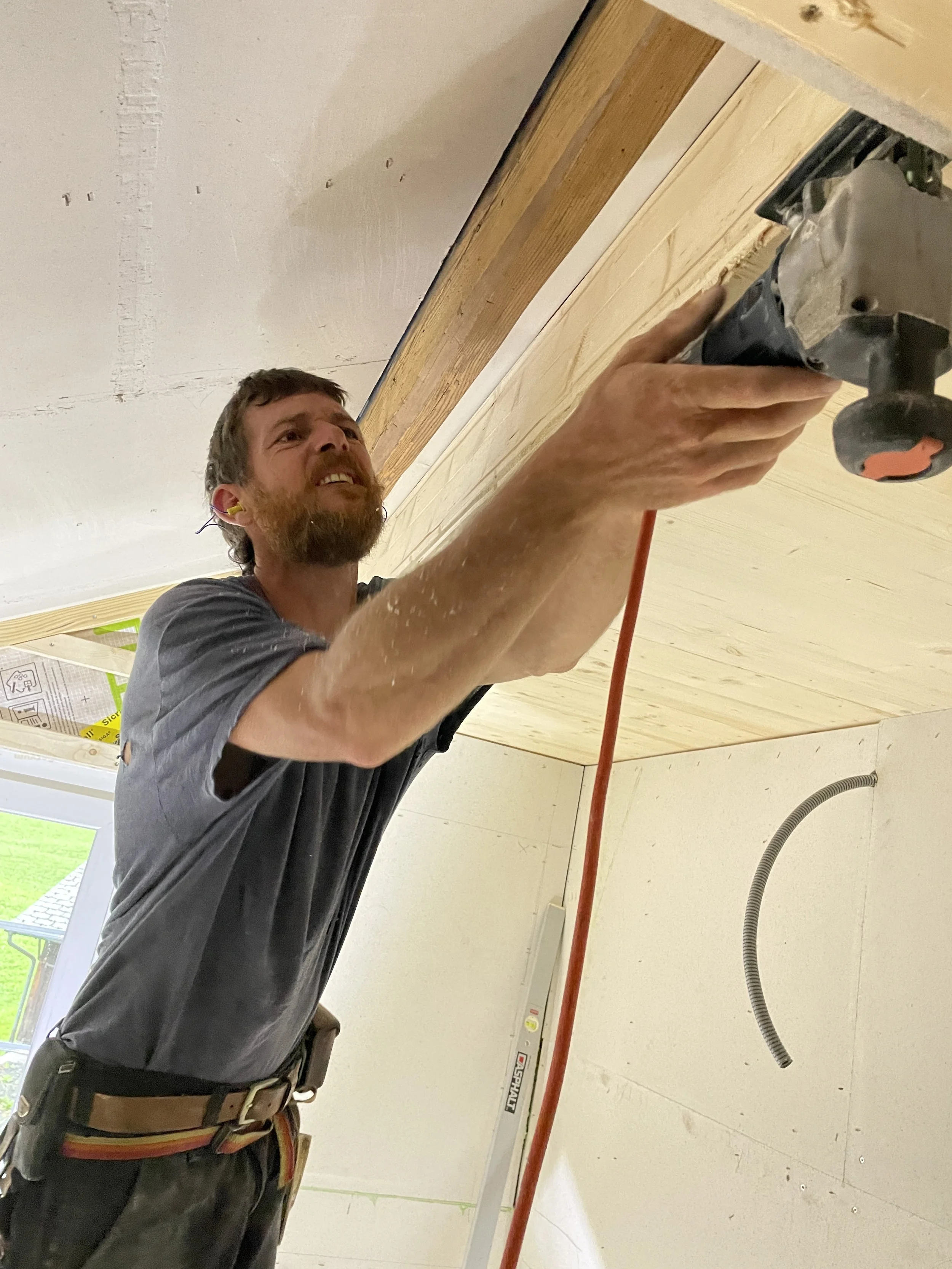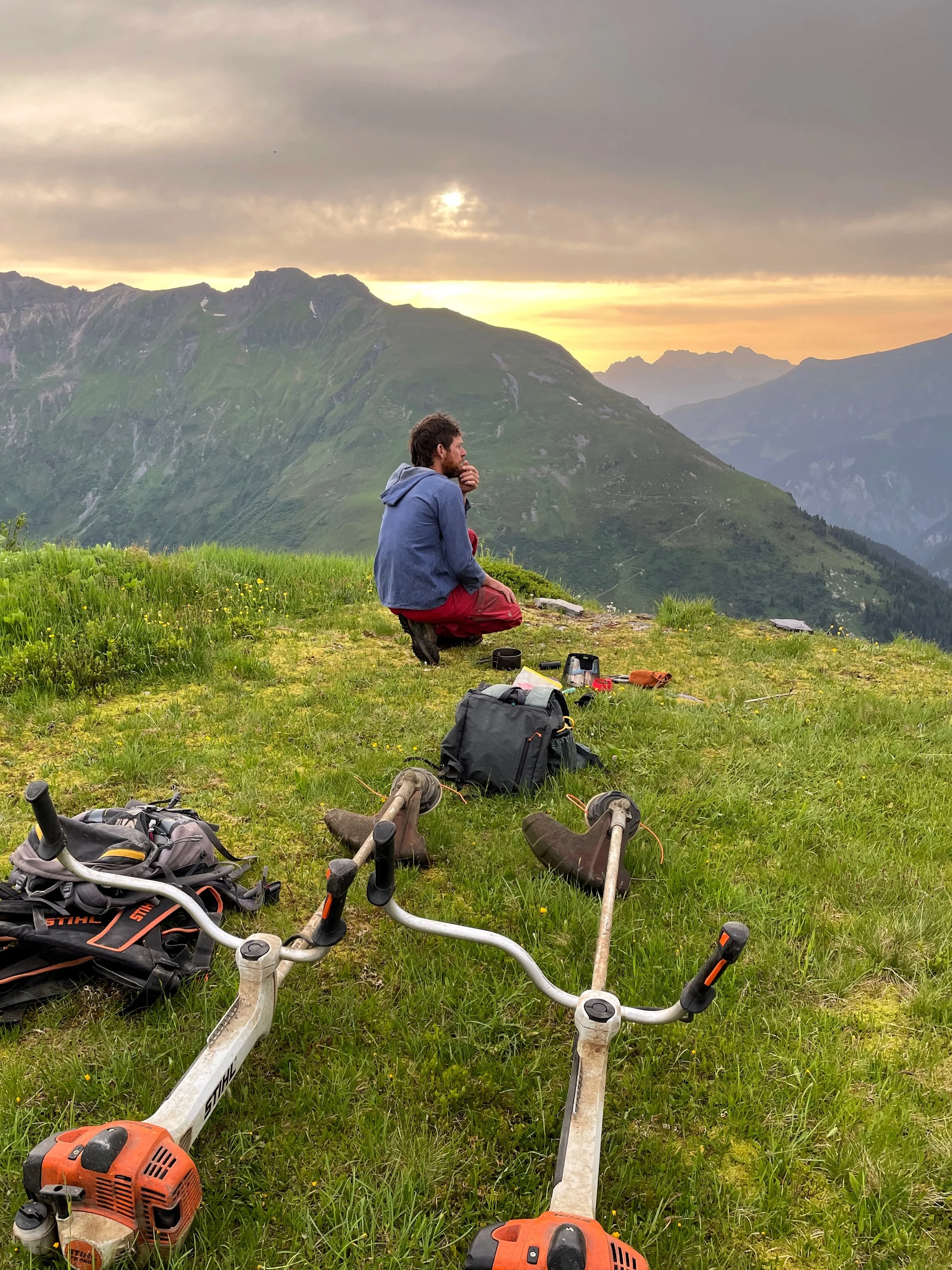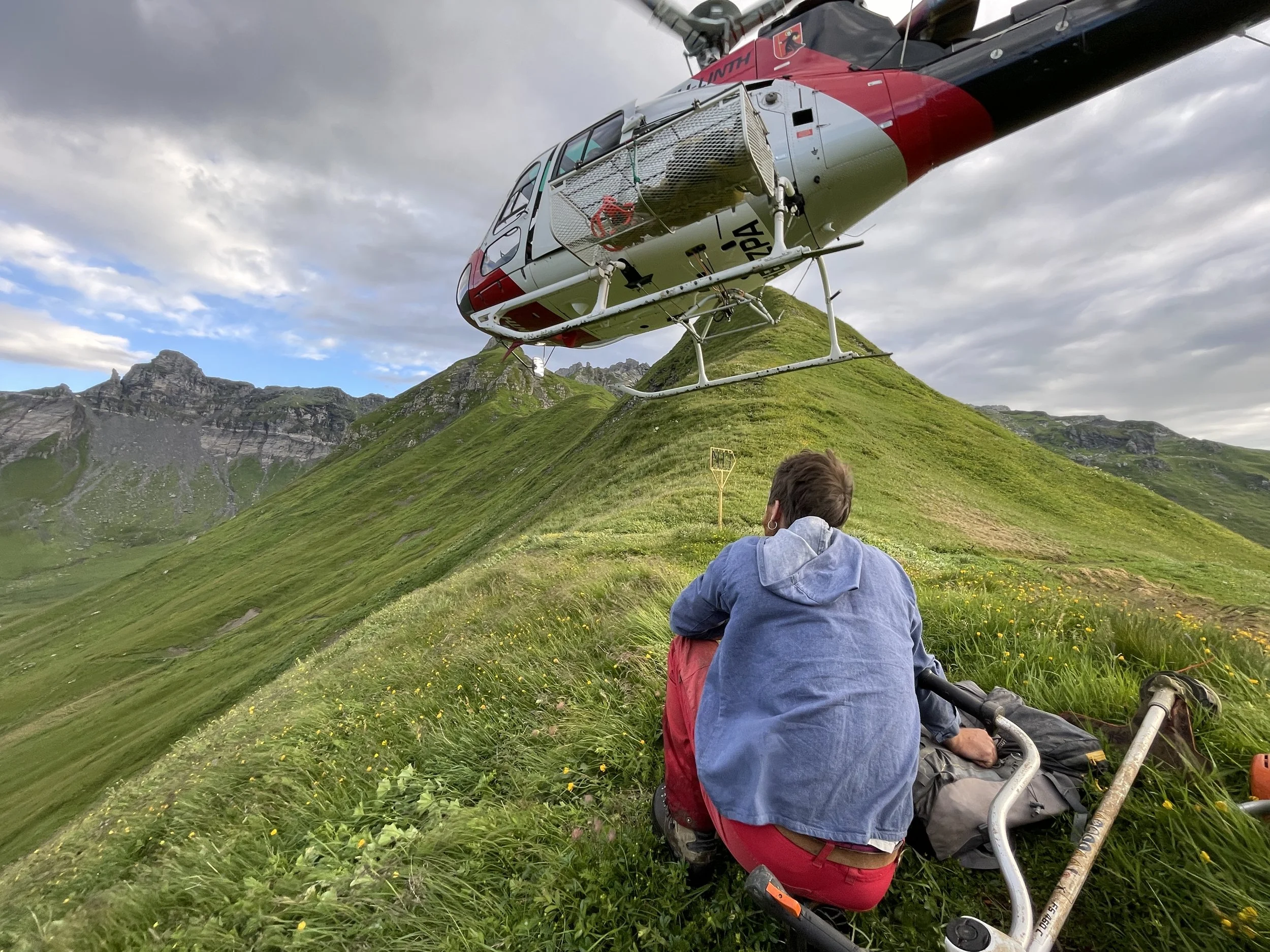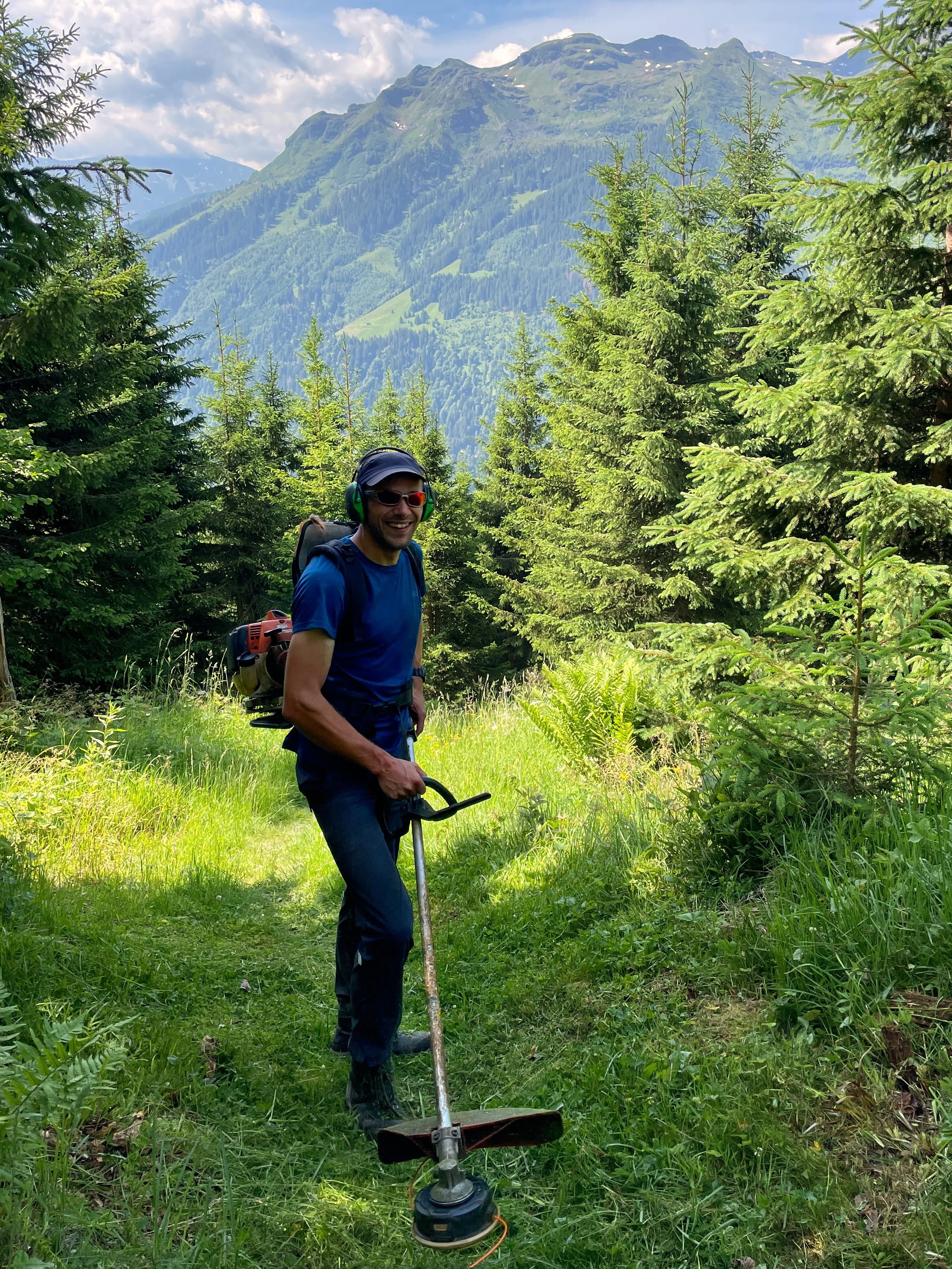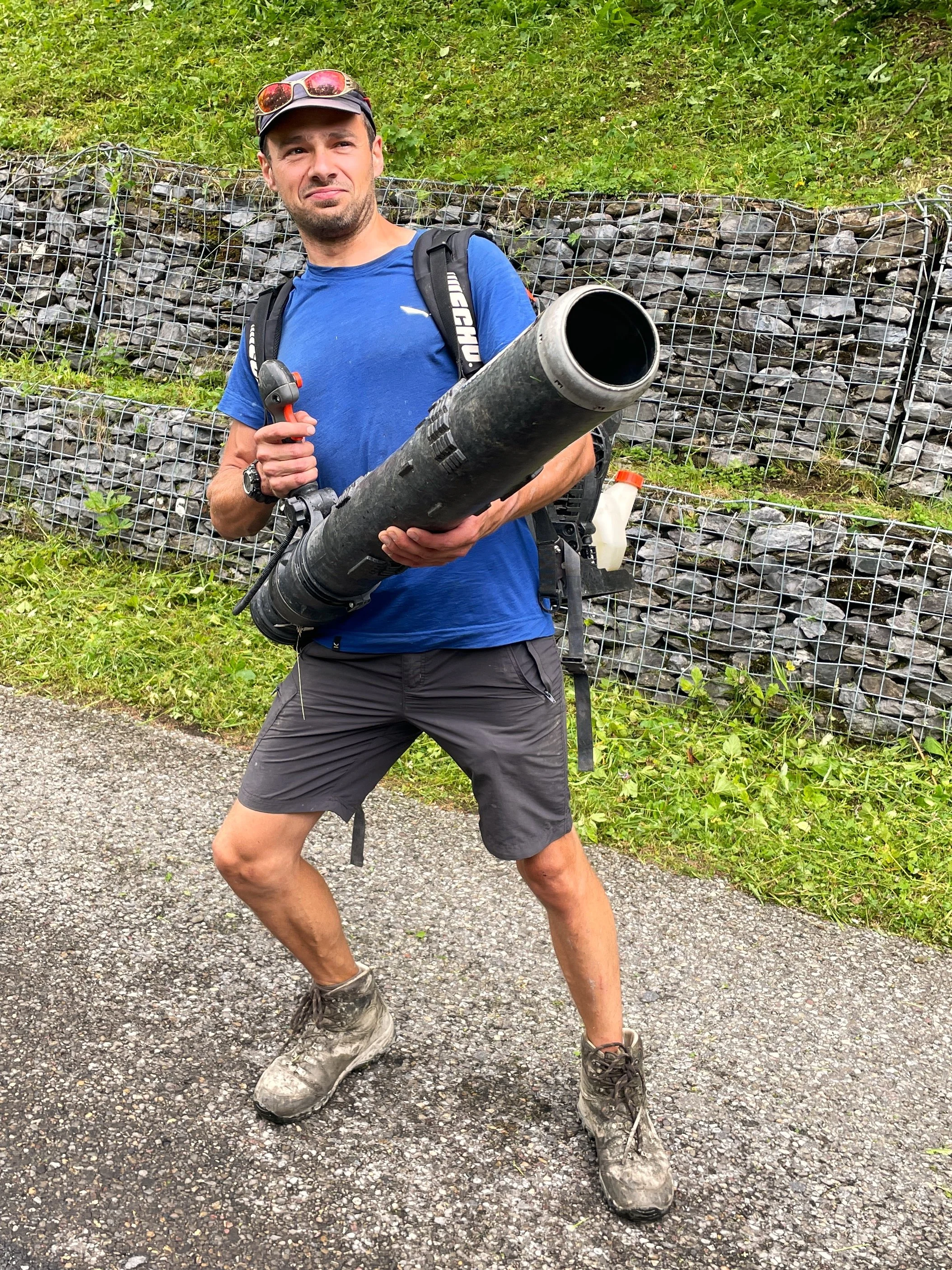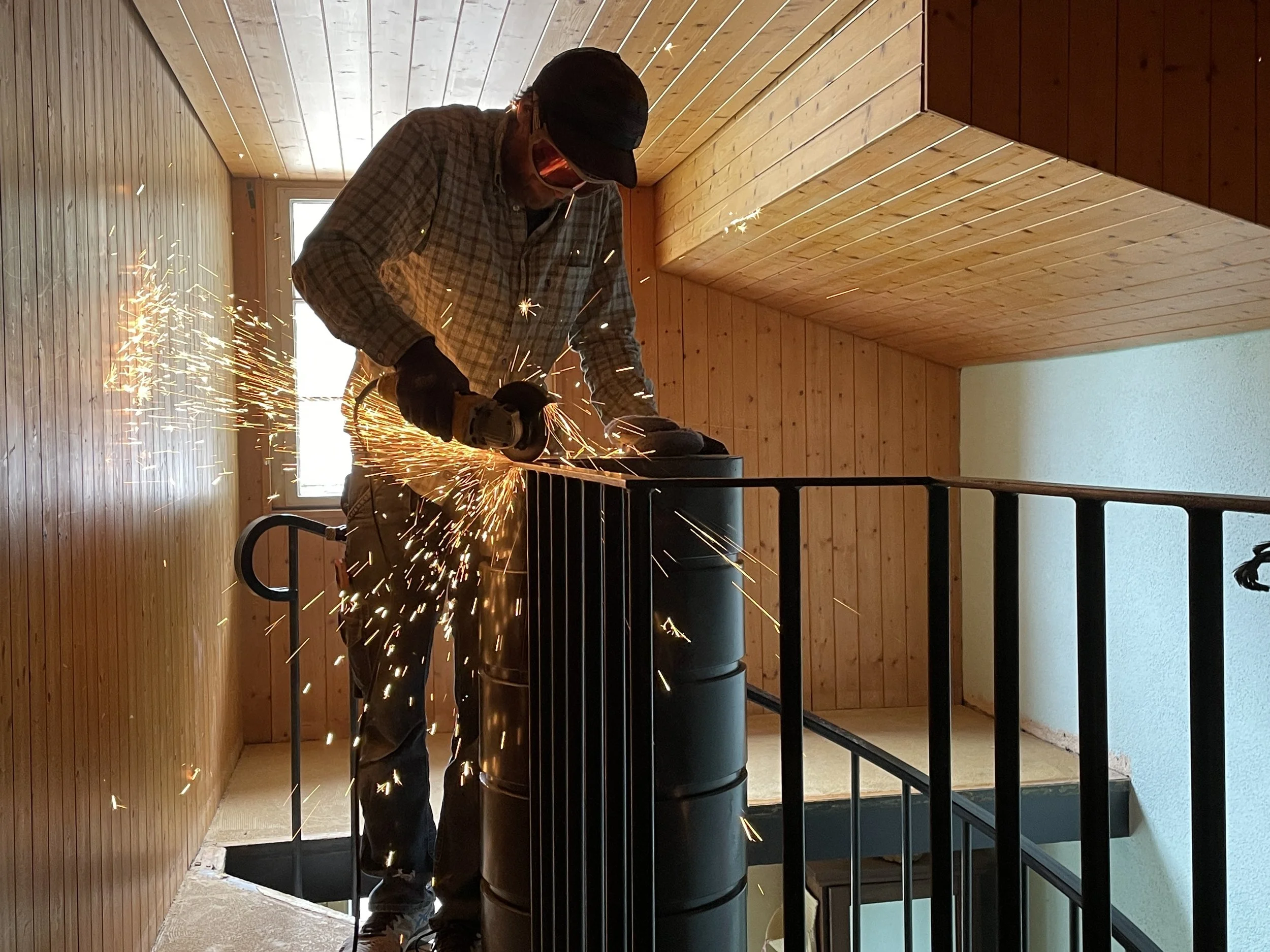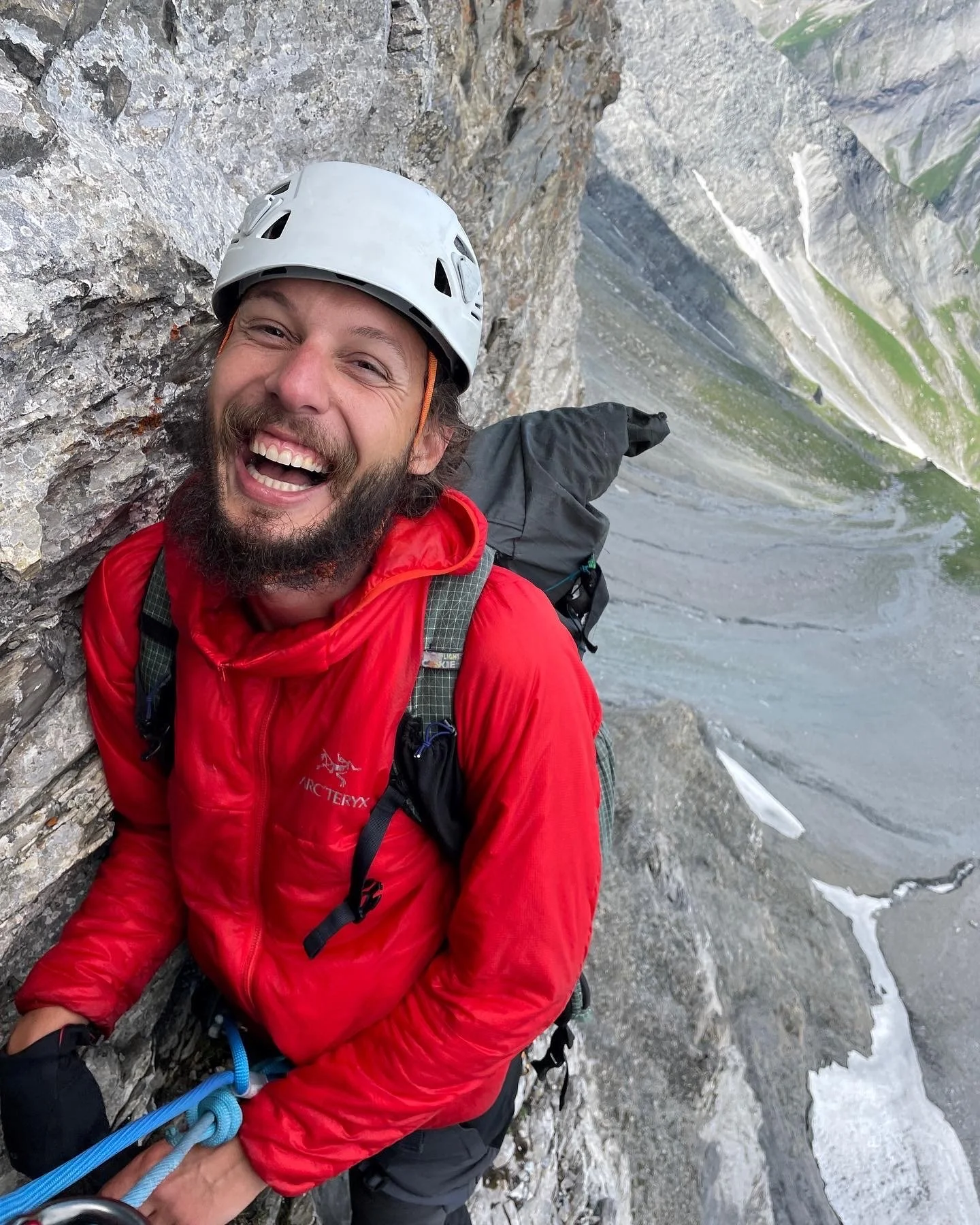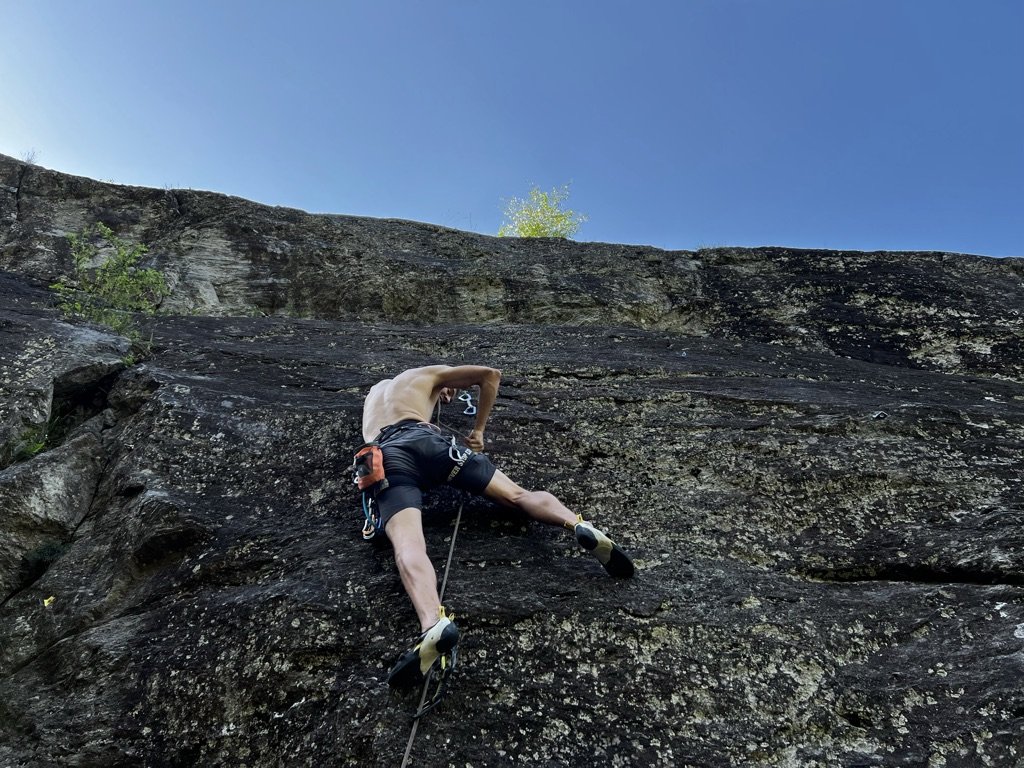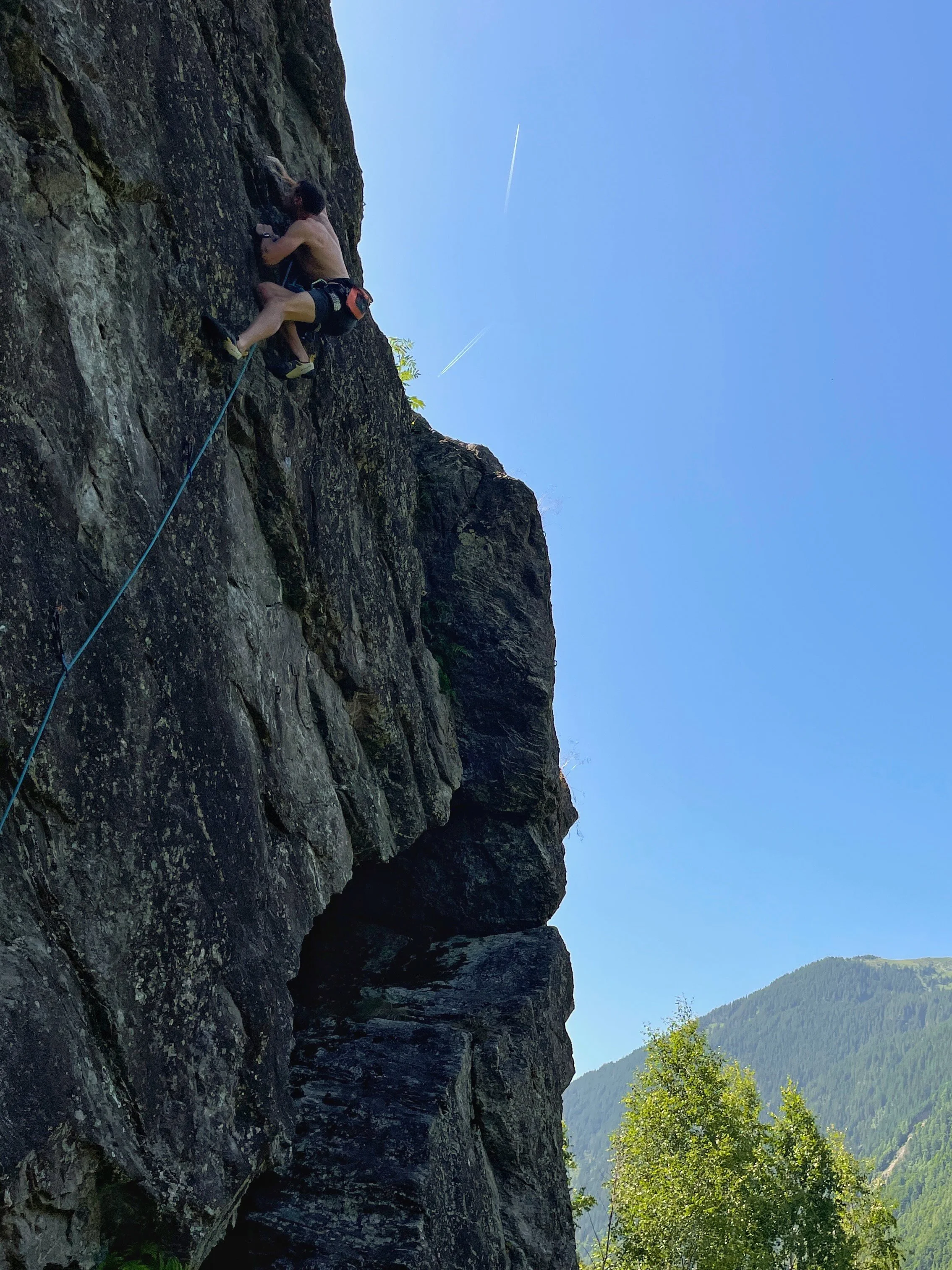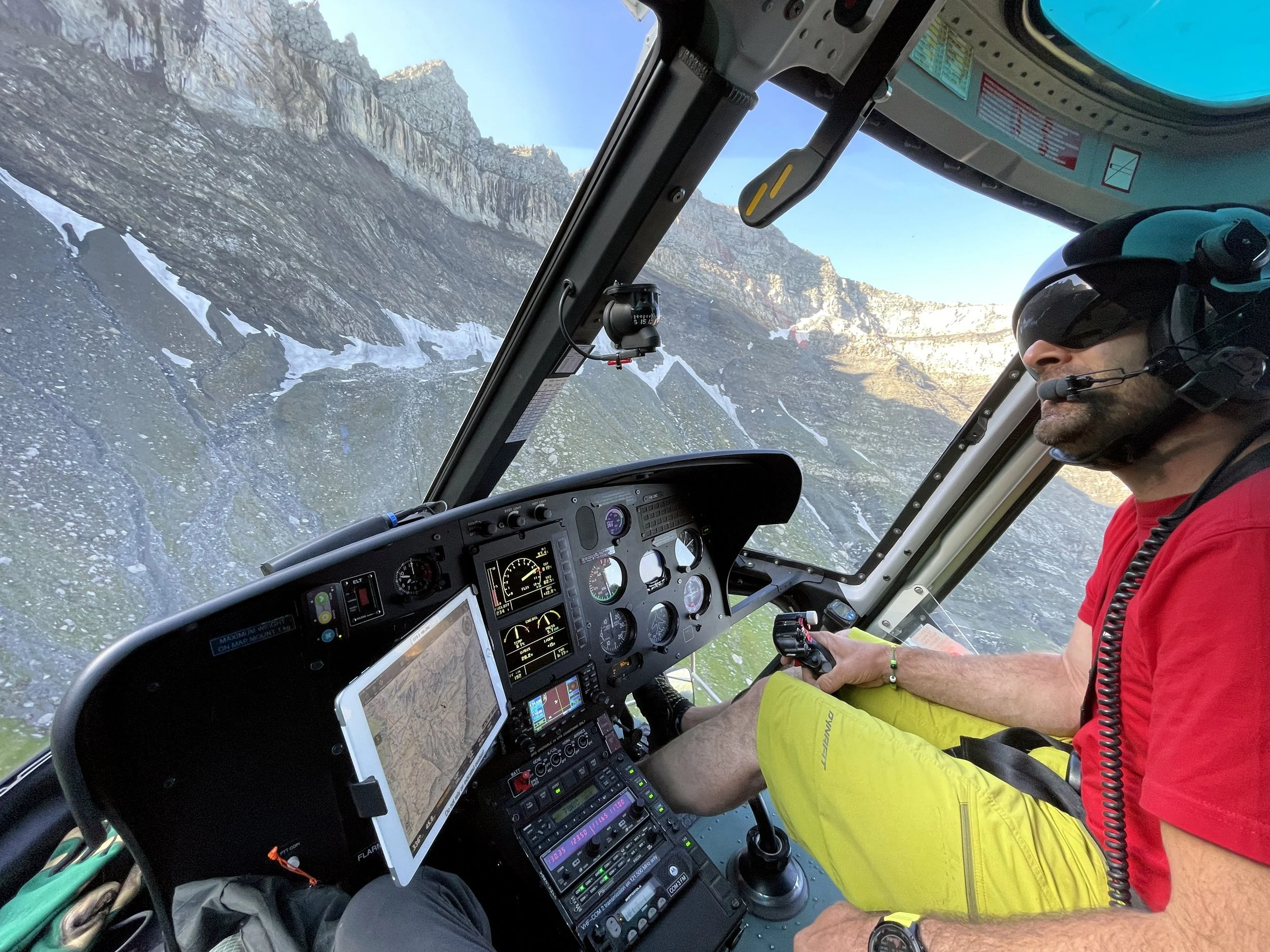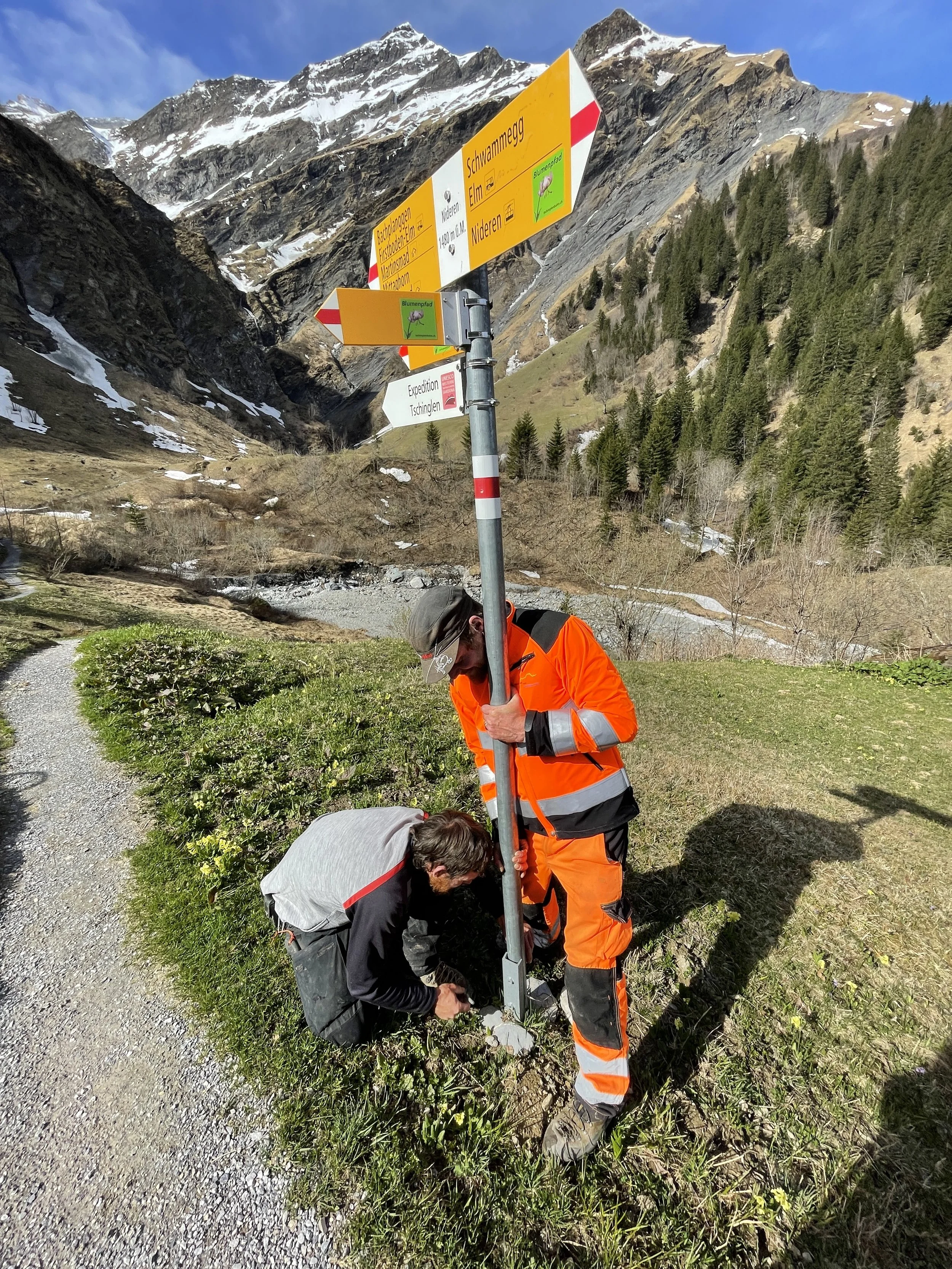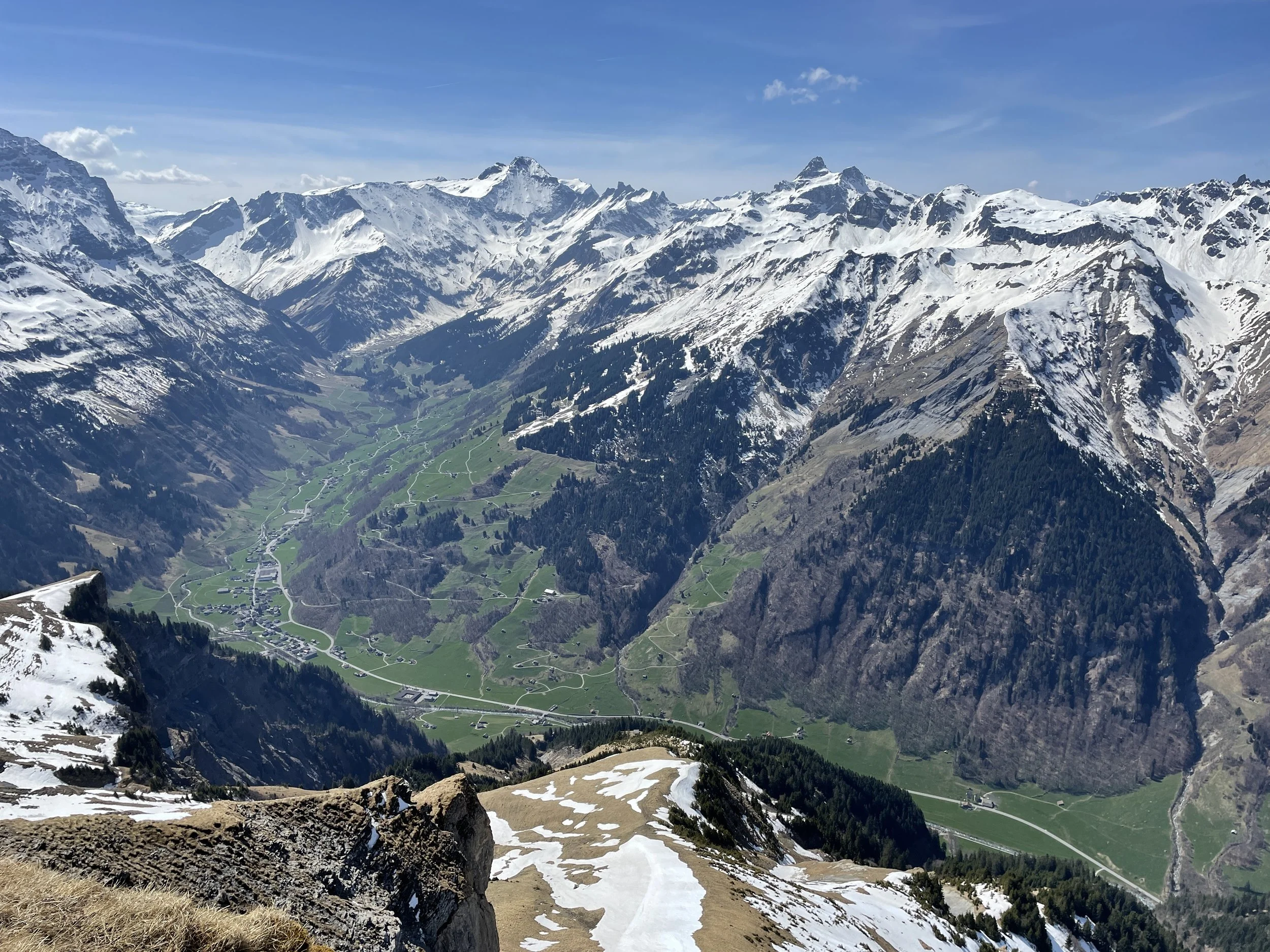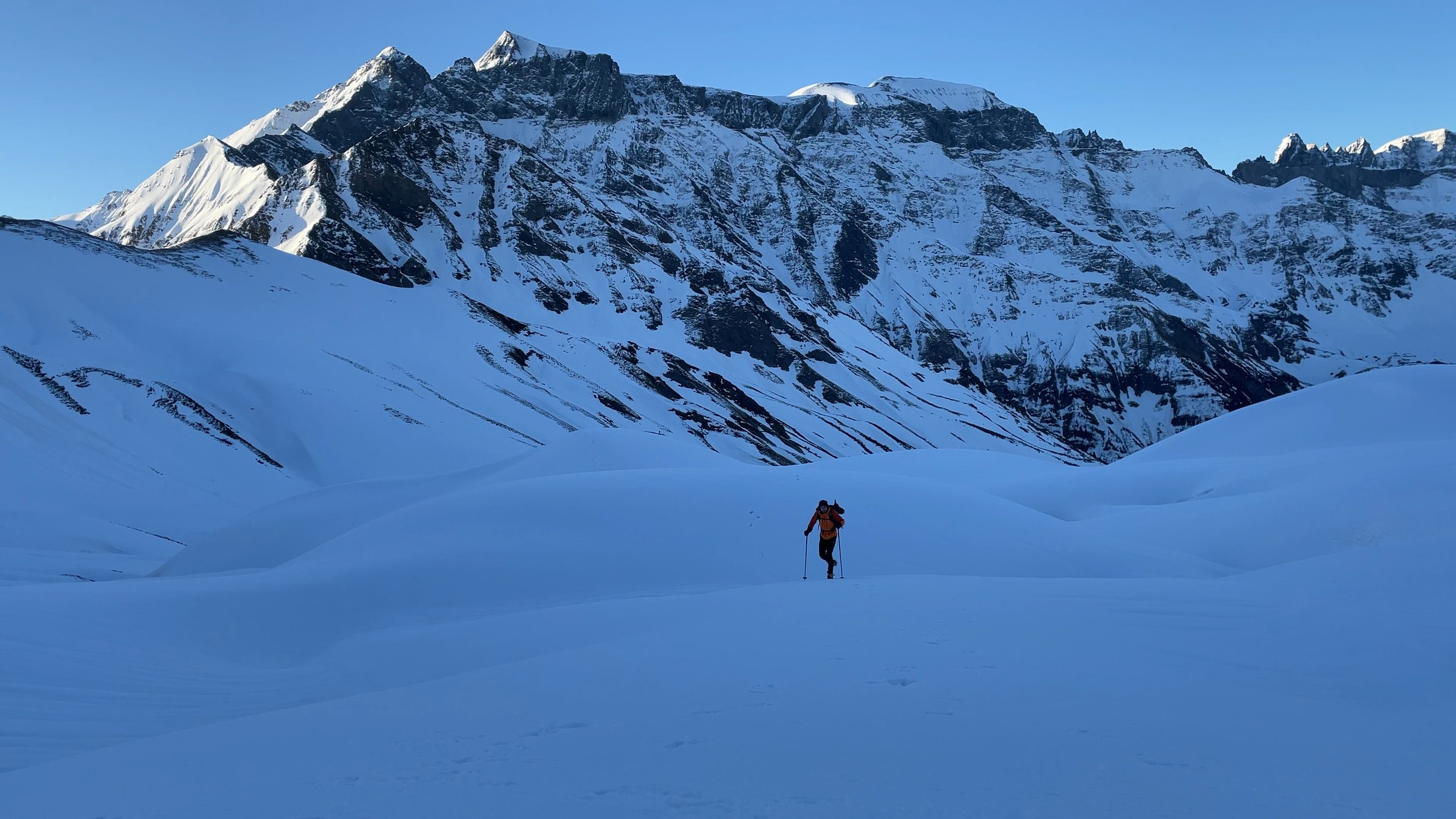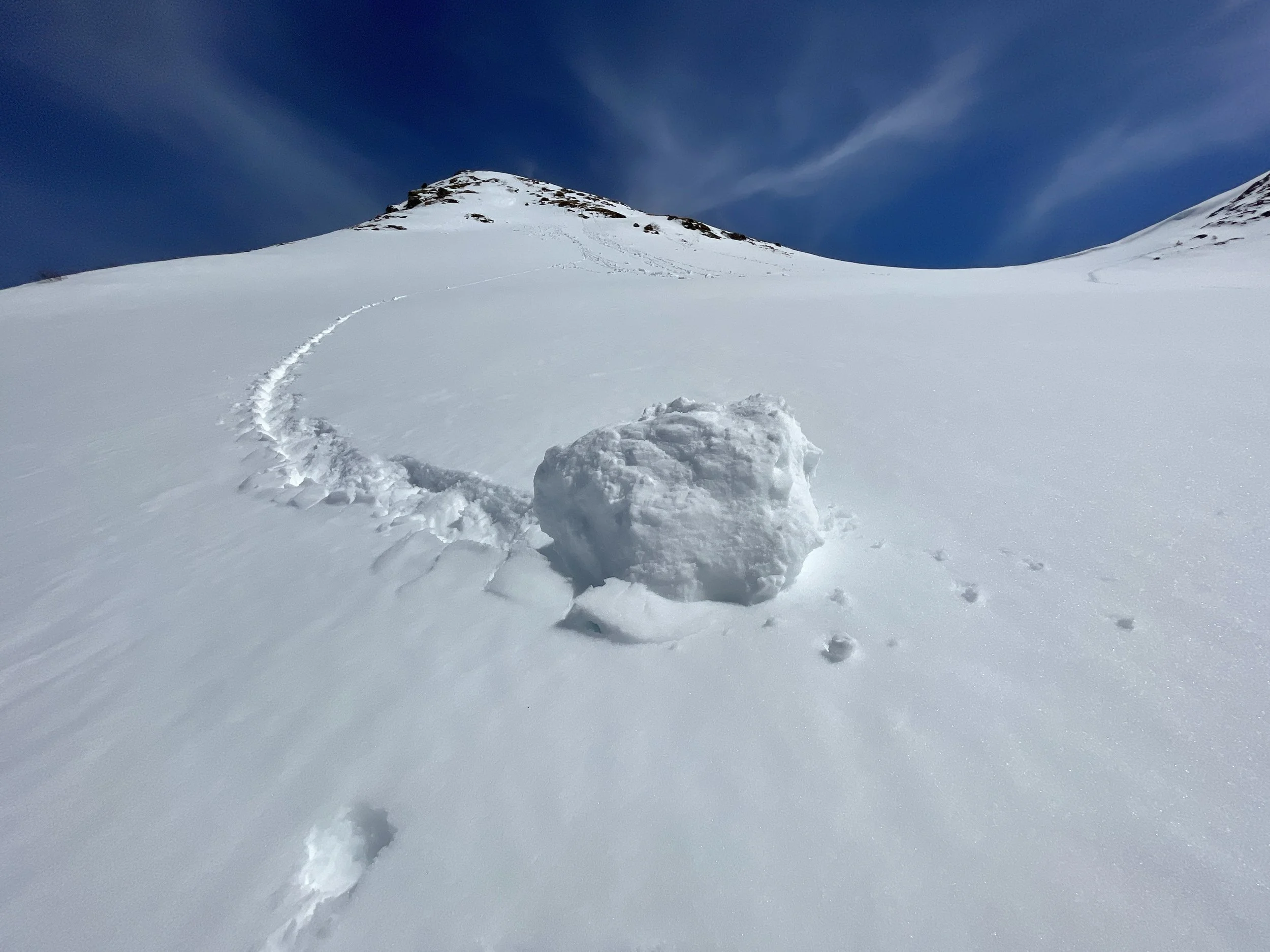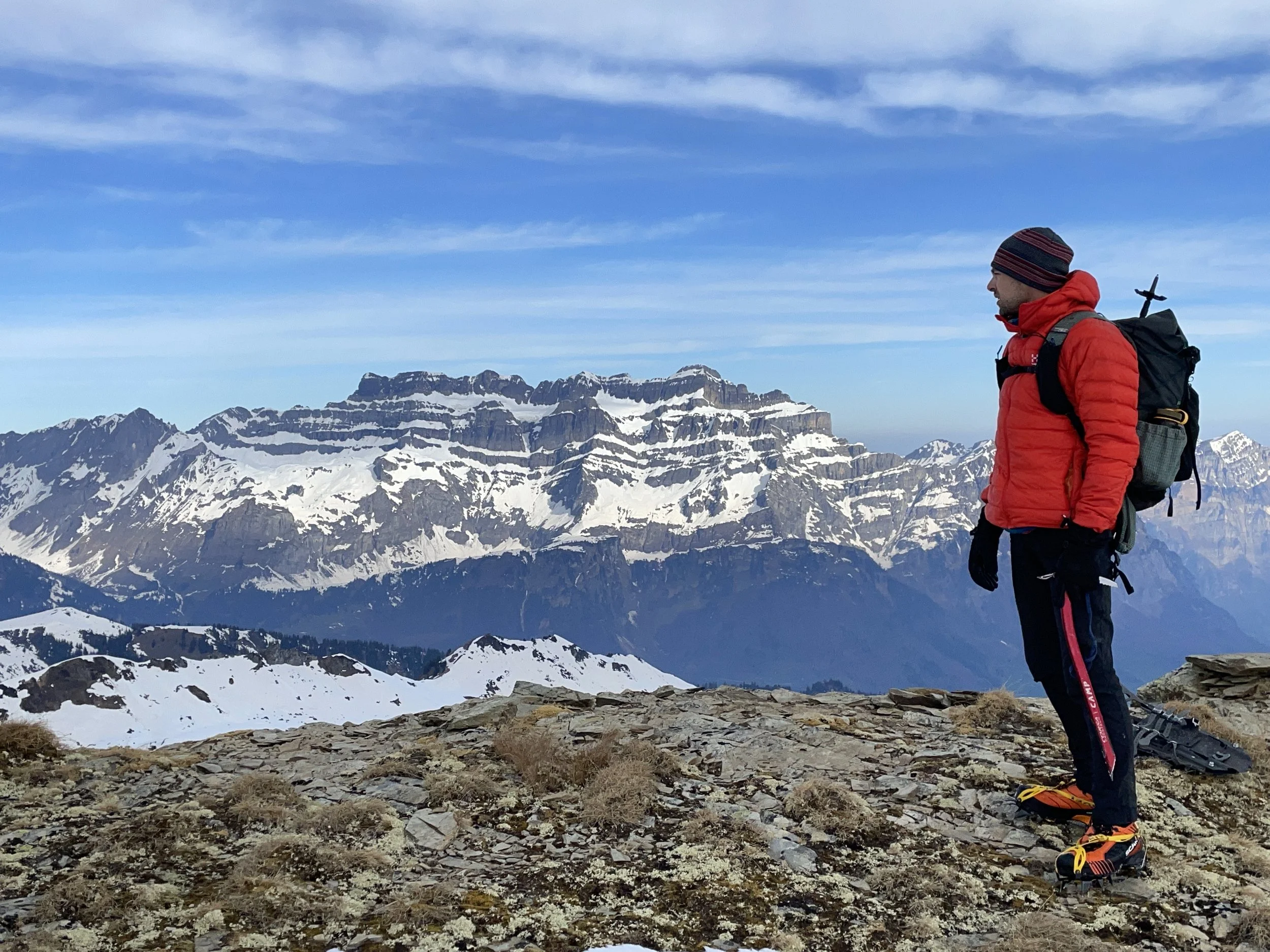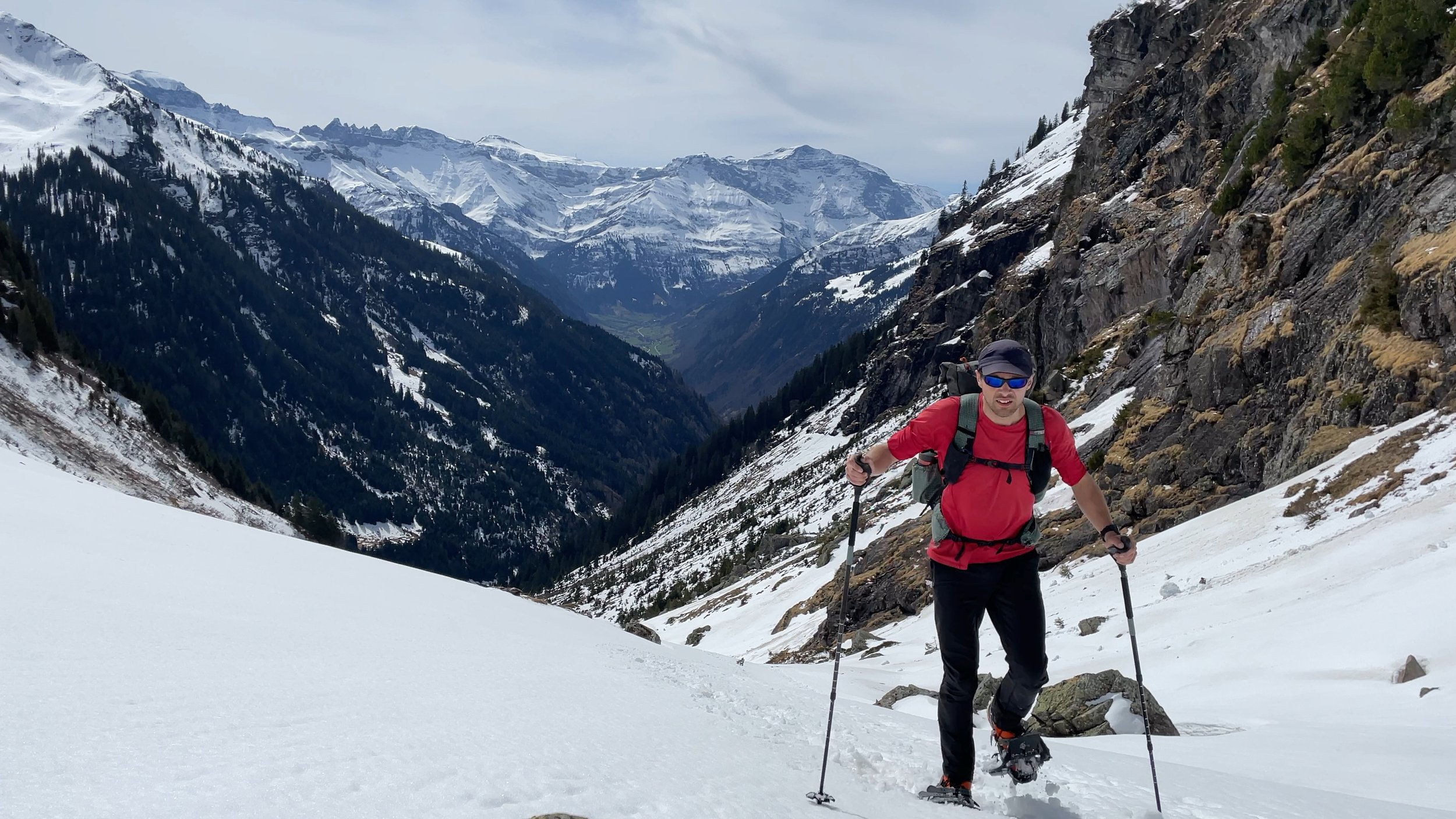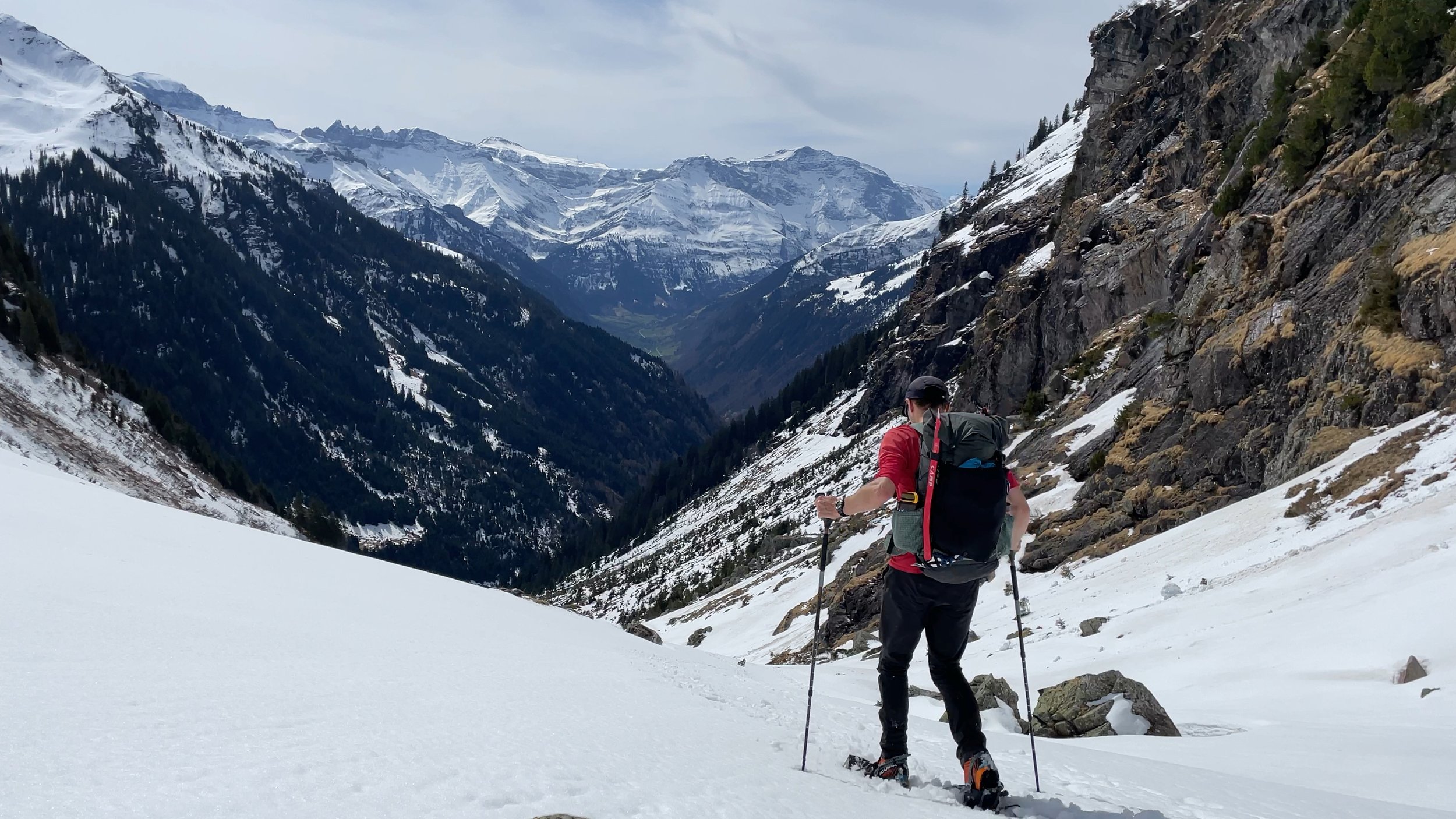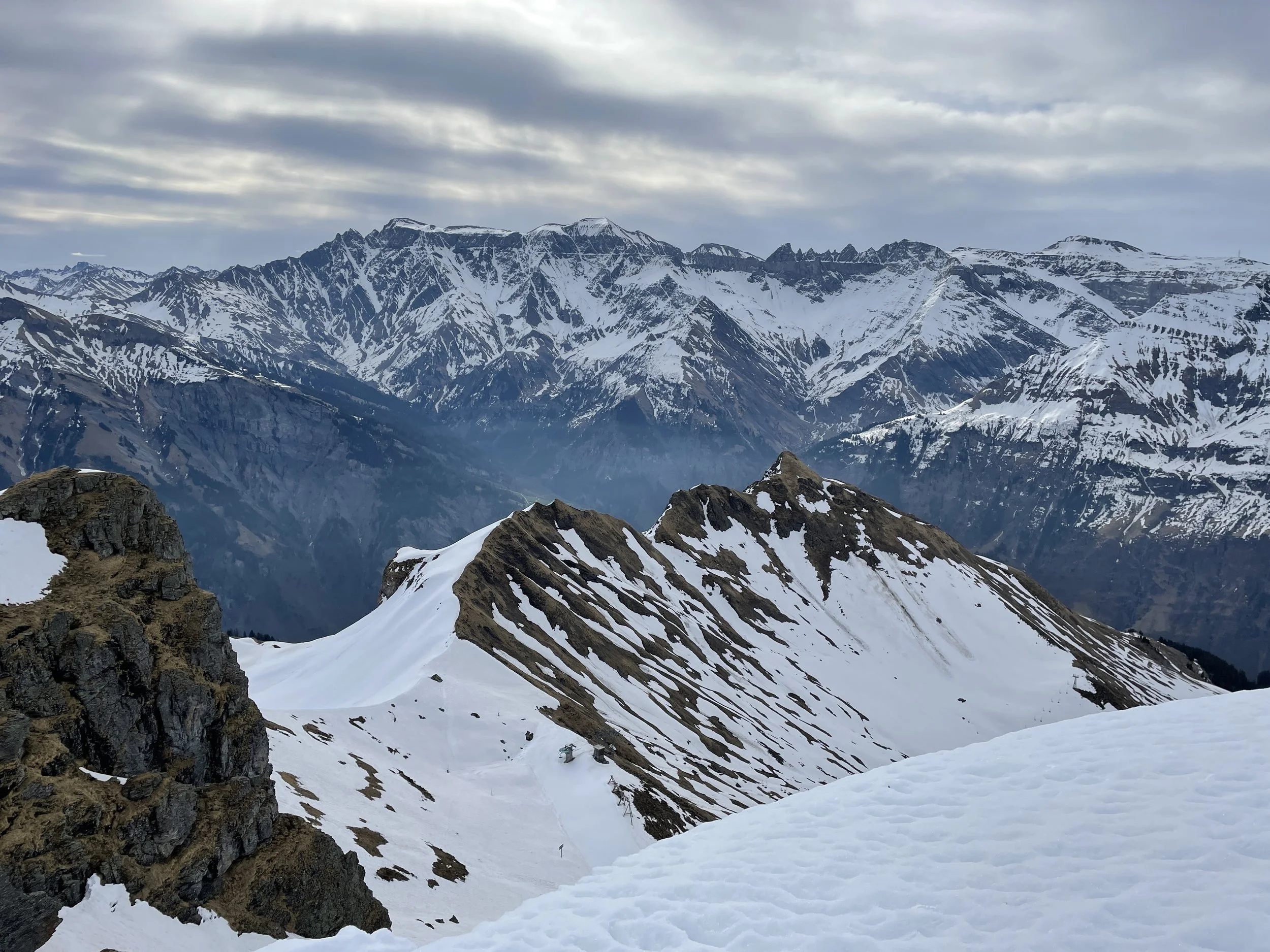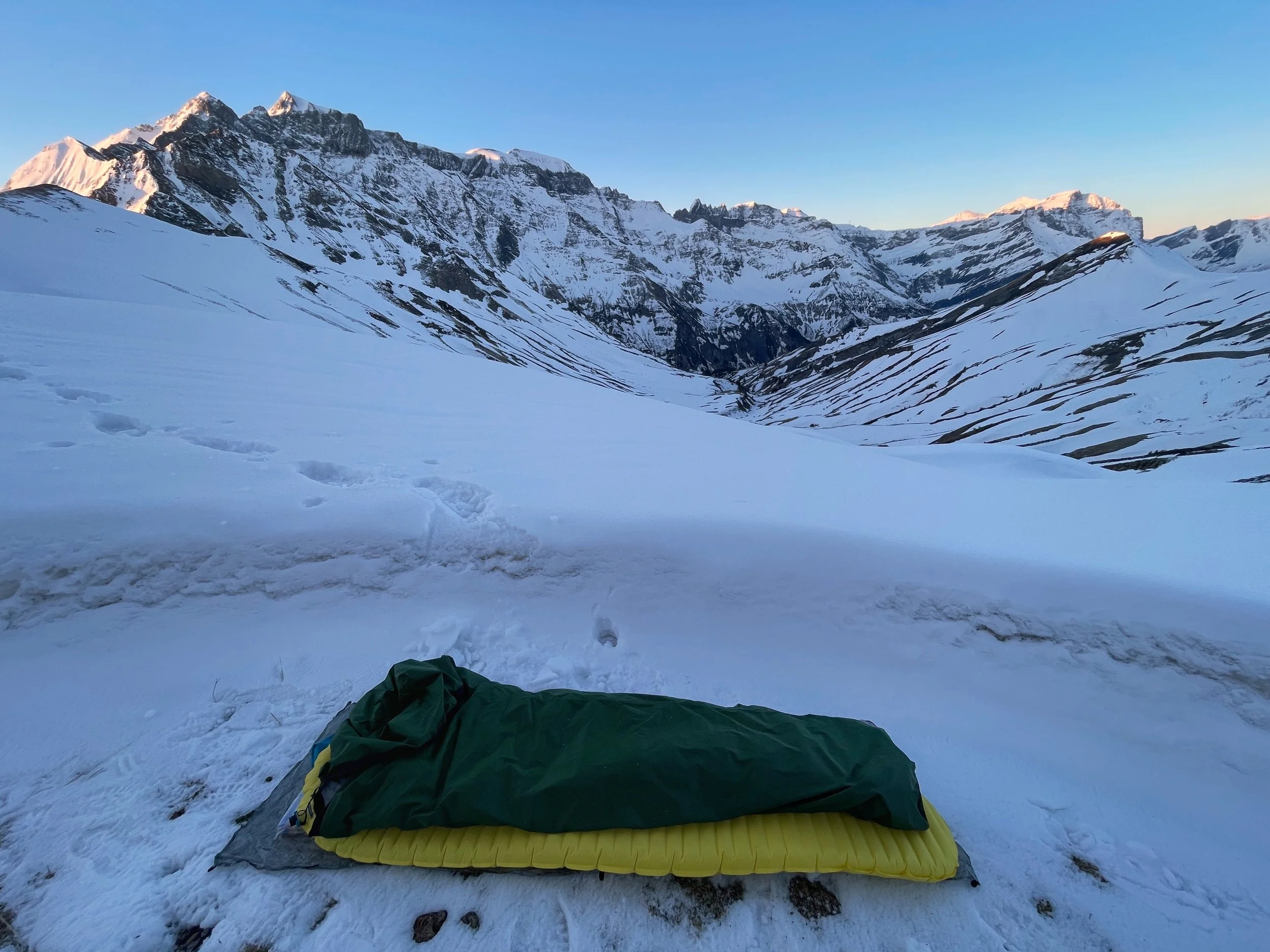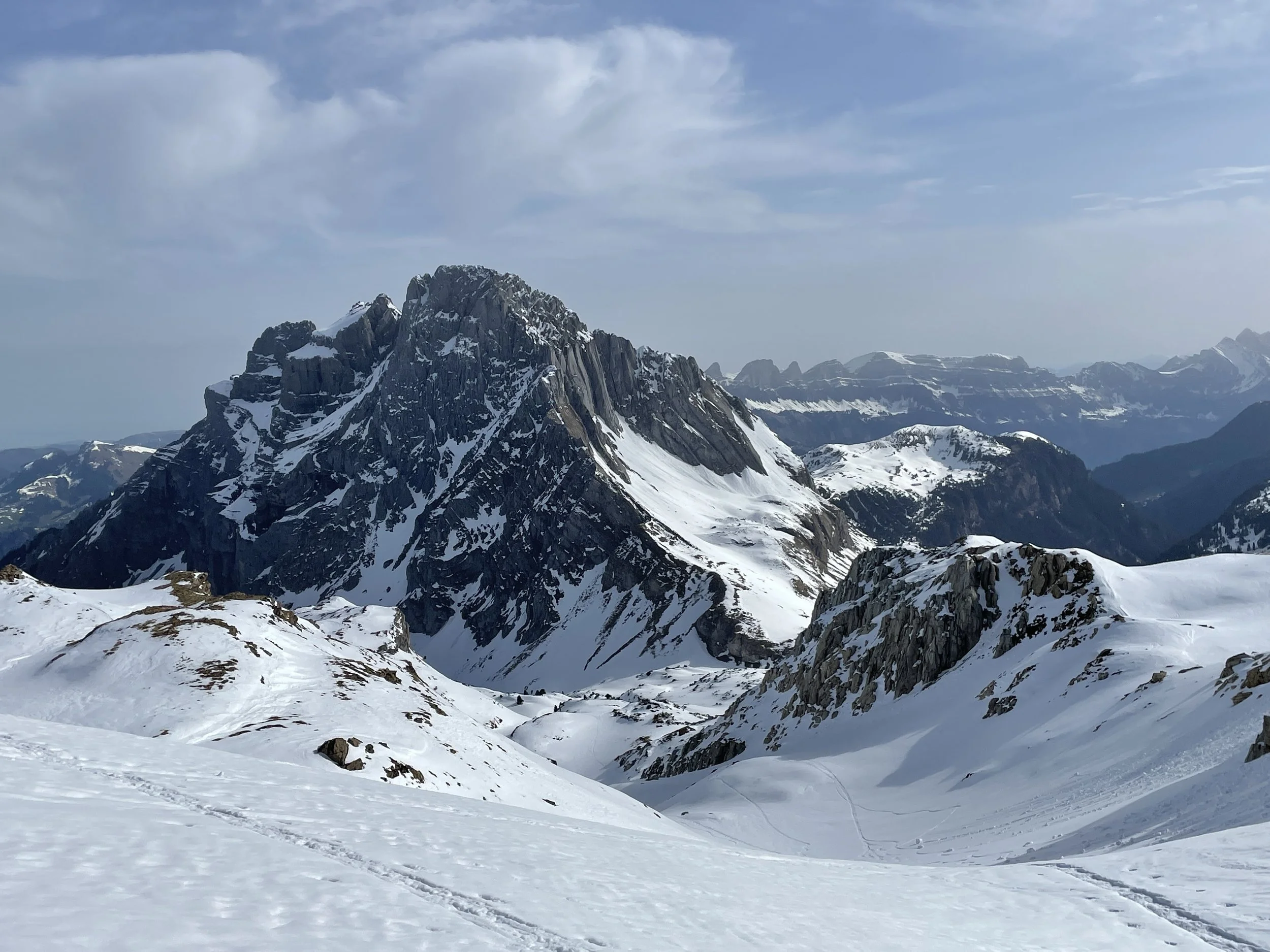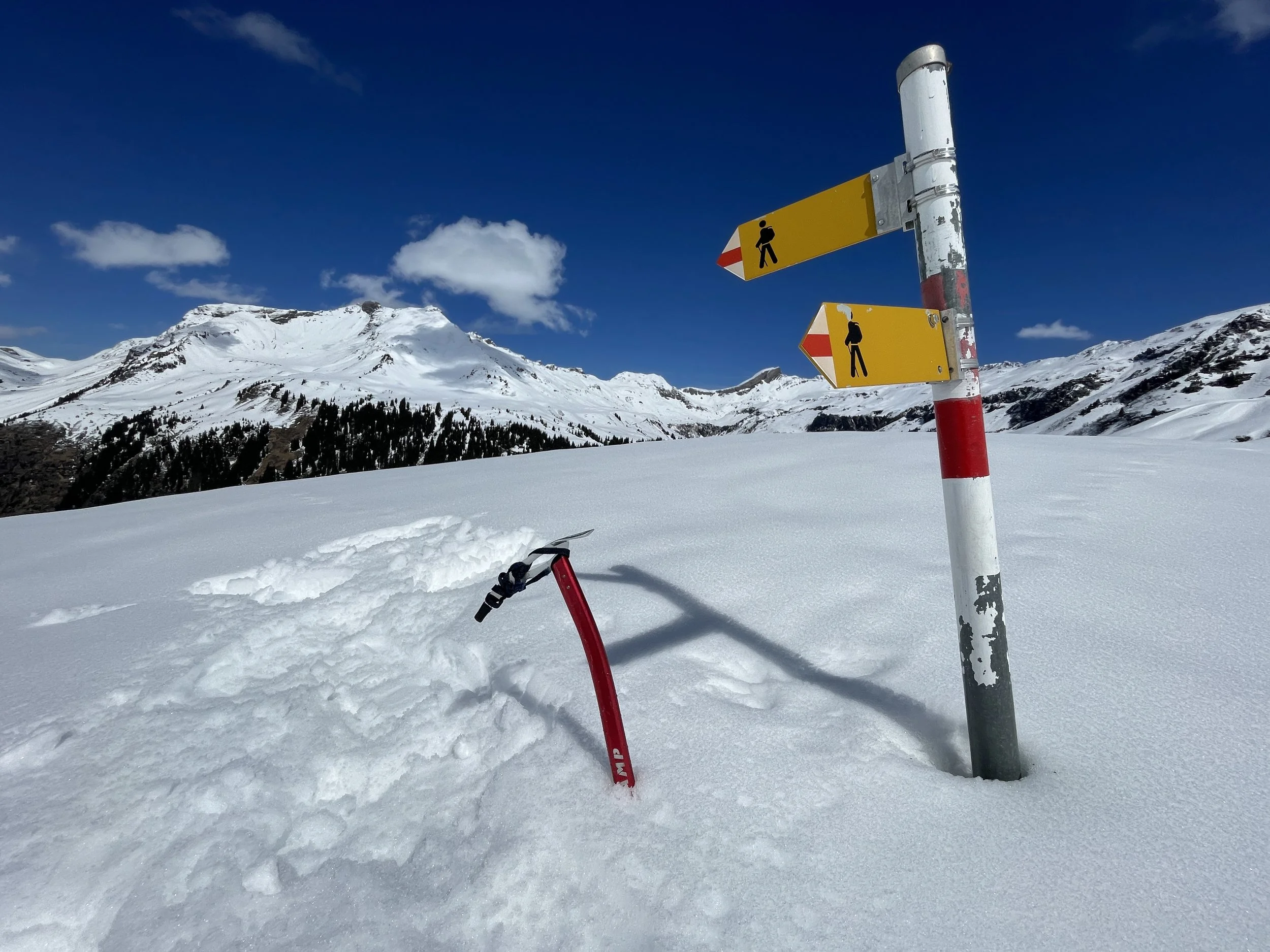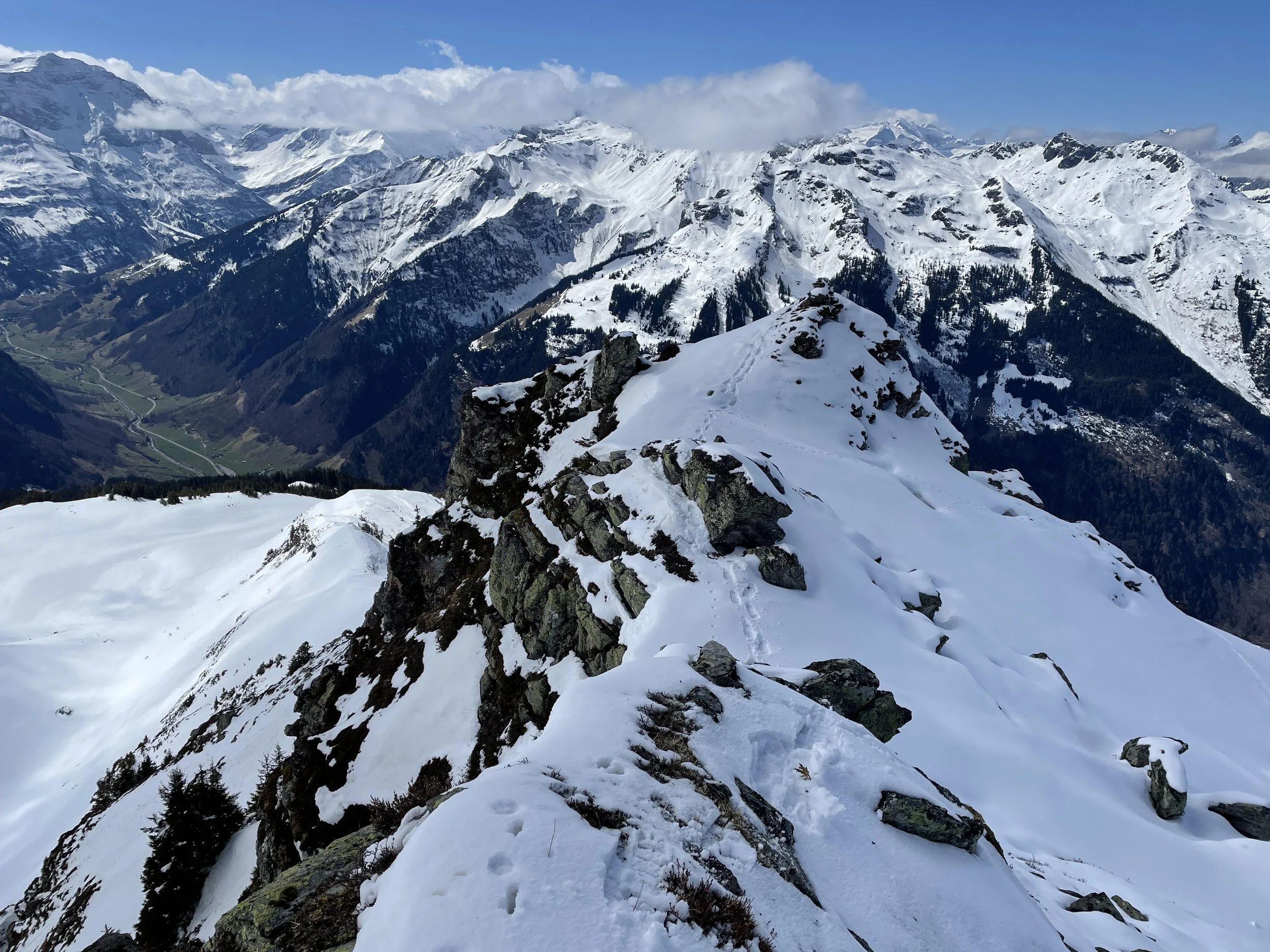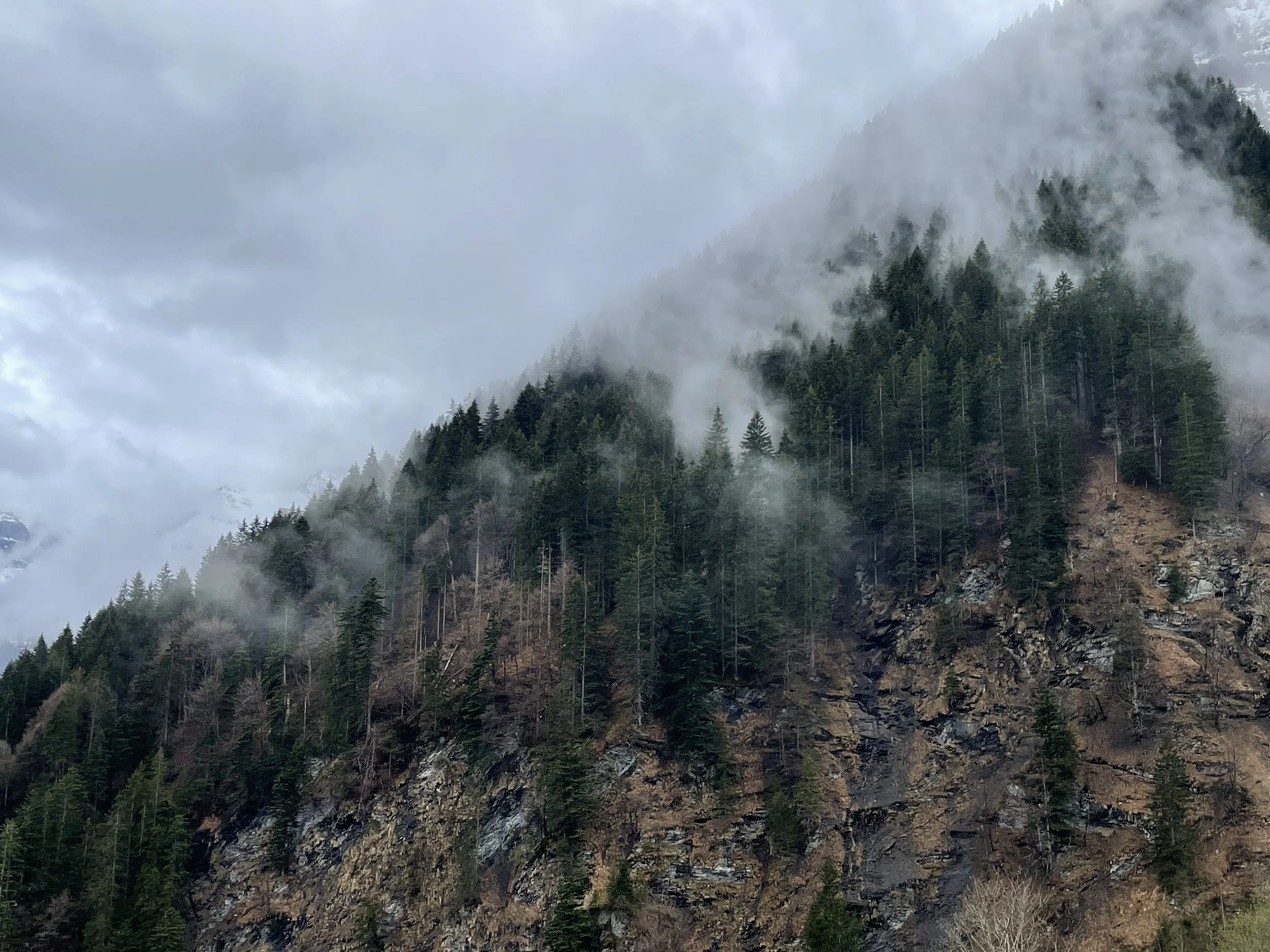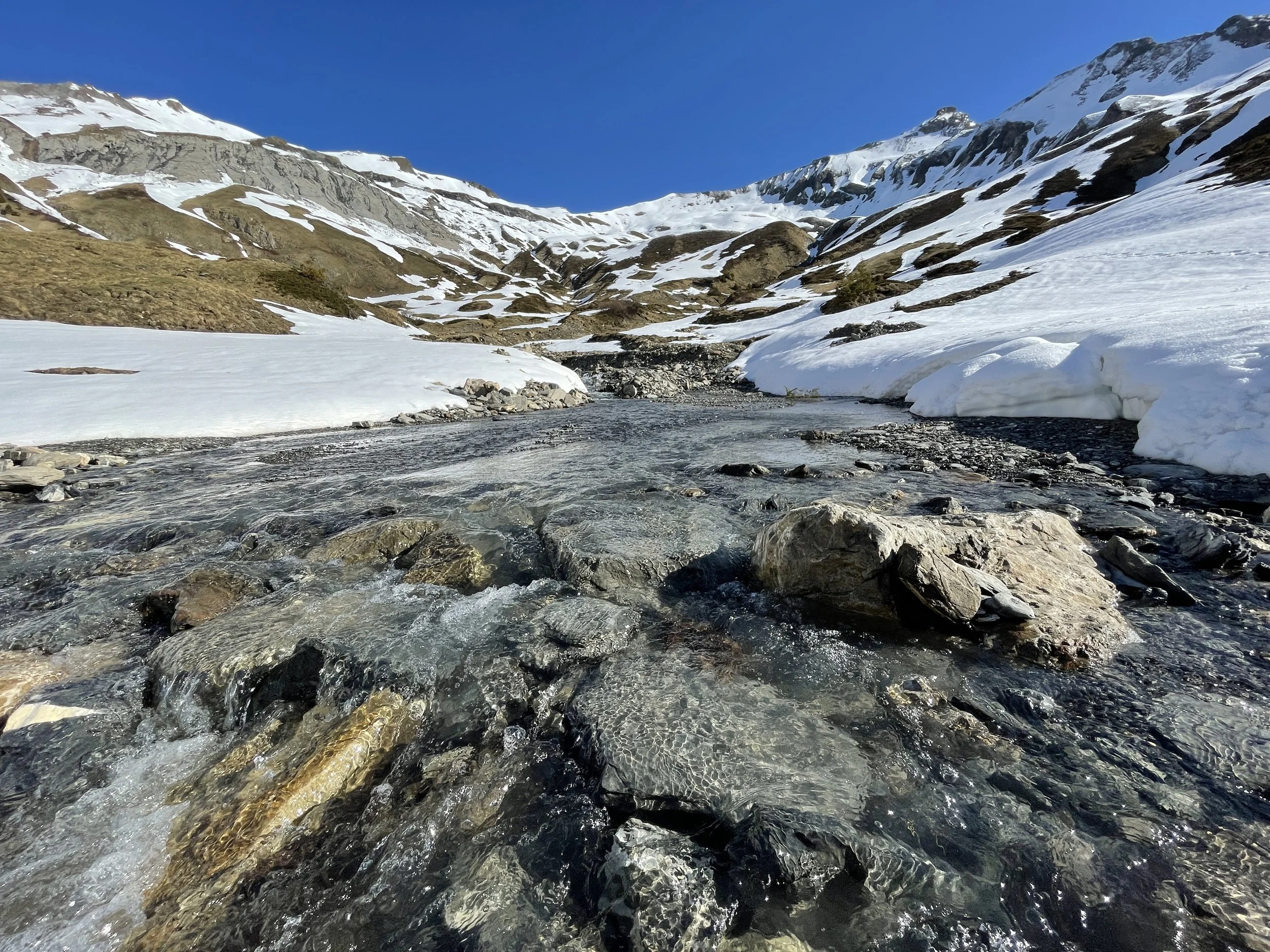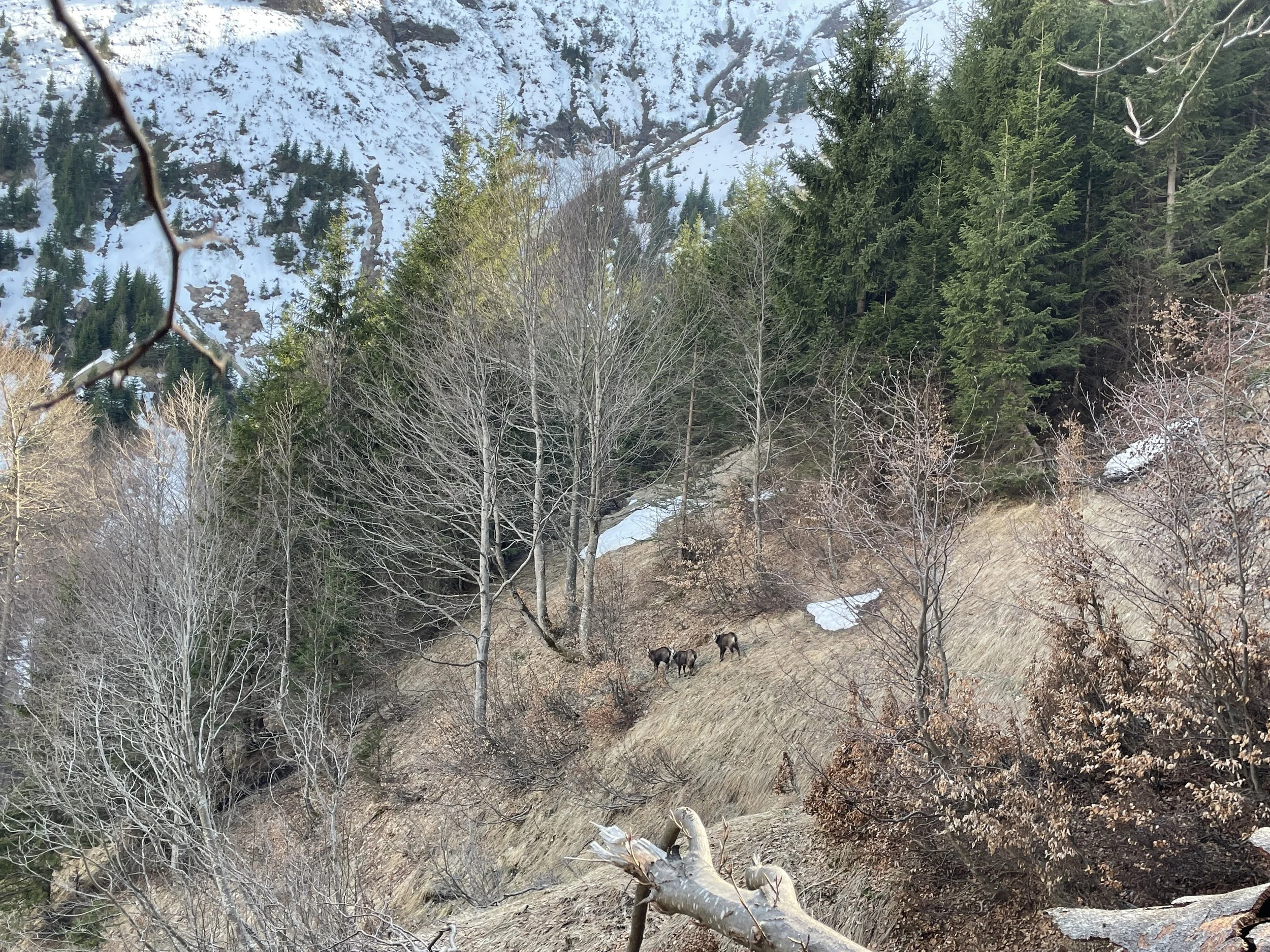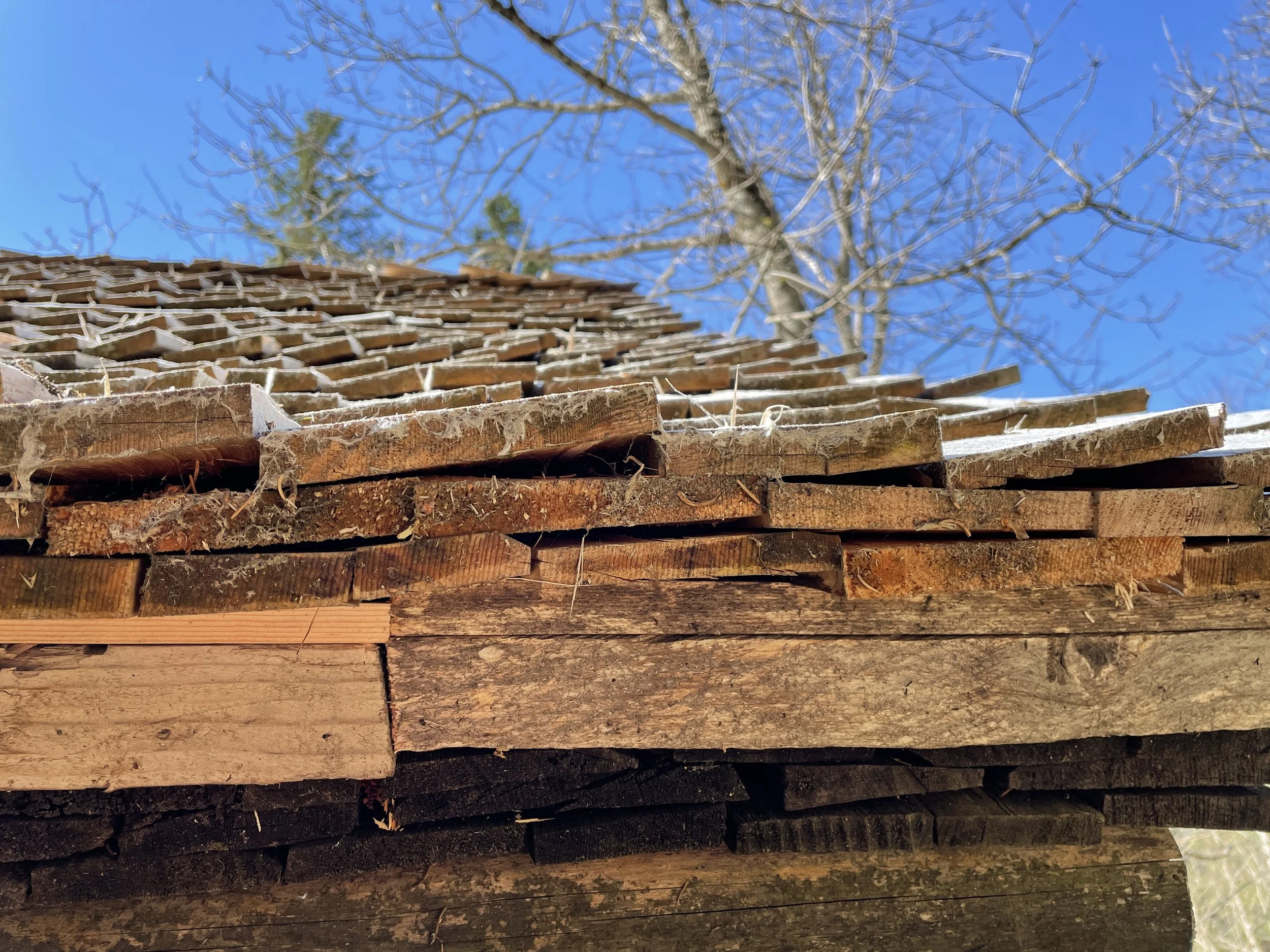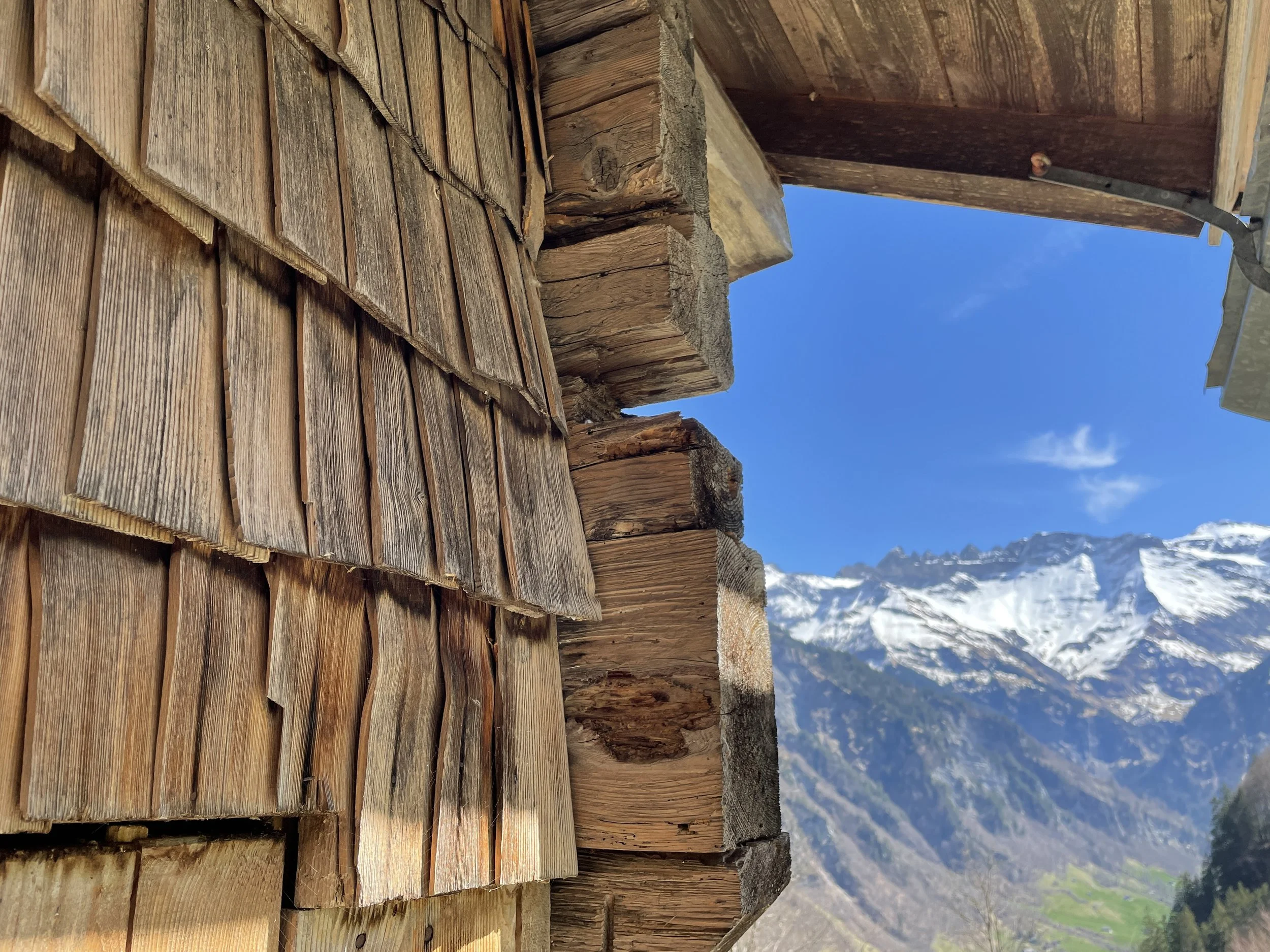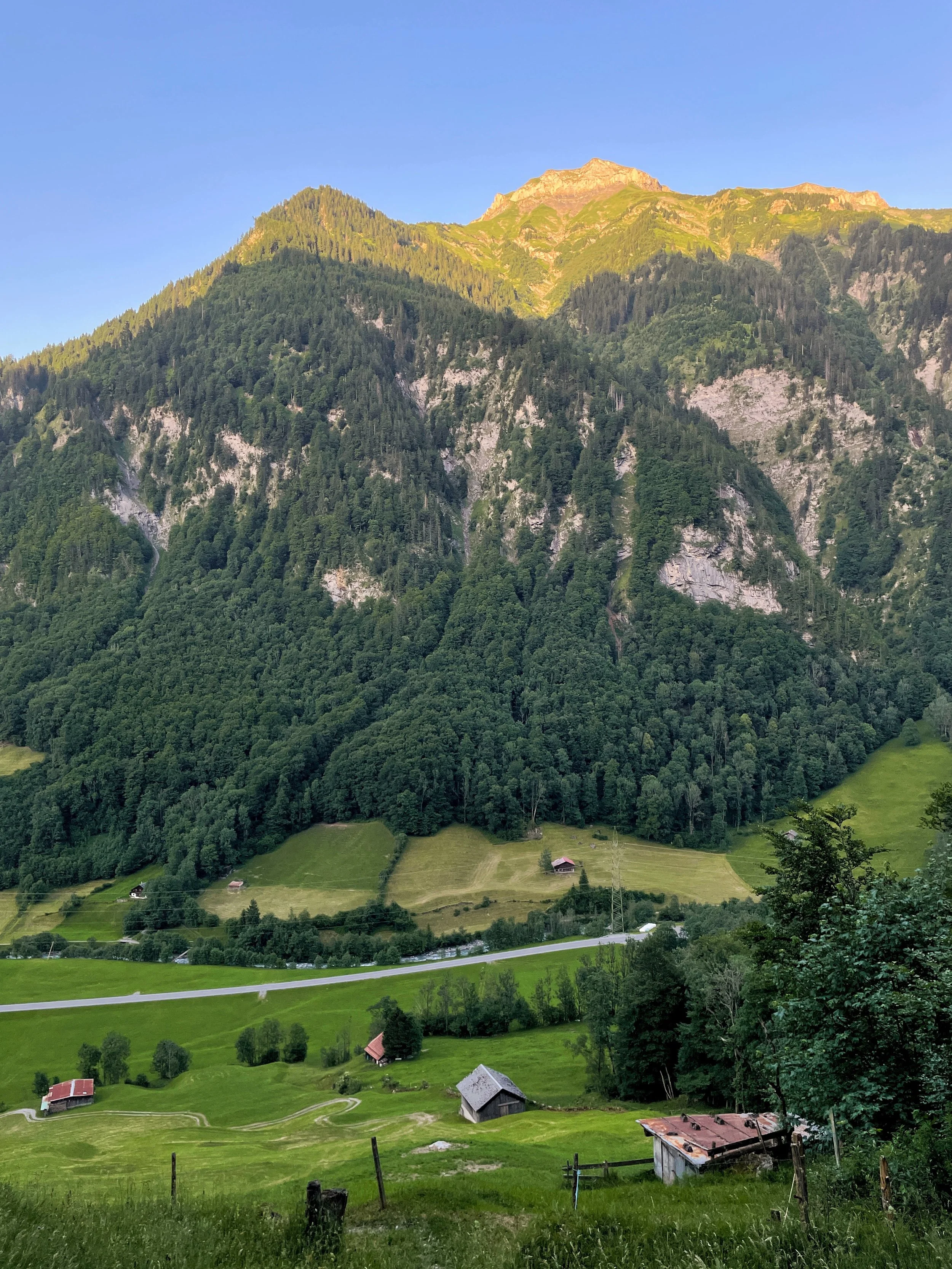
Trail work in the Glarus Alps
I spent several months in the Glarus Alps of Switzerland, mending the trails that I’d normally hike.
Our daily commute often involved a helicopter ride!
During 2022, I volunteered for several months at a hostel in the Glarus Alps of Switzerland. I also worked with the cantonal community to maintain the local hiking trails in the valley.
During the winter months, trails quickly become buried by rock fall and avalanche debris. Our job was to clear the rubble away and restore the paths as the snow melted.
Volunteering for Nicole and Florian at the hostel made me feel like an active participant in their local community, rather than a passive observer. I wasn’t just a tourist passing through.


Maintaining the hiking trails helped me to notice the endless variety of rocks that lay all around us.
The valley above Engi is part of the Sardona UNESCO World Heritage site. It provided a spectacular example of how mountains are formed.
Huge strata showed where tectonic plates had once collided, thrusting swathes of rock upwards to form the jagged peaks and cliffs of the Glarnerland.
Amongst the many layers of rock I found fossils of sea creatures. They were once on the bed of an ancient ocean, but now they lay thousands of metres above sea level.
It dawned on me that this geological process hadn’t ended- the Alps are still a constantly shifting landscape. Our trail work helped me to notice more details. Patterns and colours in the rocks began to leap out at me. Whenever I walk on a trail anywhere now, I often find myself tidying up rocks that have fallen onto the path. It feels nice to do my bit.
I’d never considered the amount of work needed to build and maintain a hiking trail. Cutting weeds, clearing rock fall and carving out drainage channels was a never ending process for the trail workers and forestry teams in the valley.
I began to understand how the course of a trail can impact the surrounding landscape as well. Wider erosion was prevented by keeping paths properly maintained- it encouraged people to avoid disturbing the surrounding rocks and vegetation. We were also providing an important service to local farmers- they used the trail network to move their animals onto the high meadows for grazing.
Finding time to explore
Spring wasn’t a fashionable time to be in the Alps - the ski season had ended, but all of the avalanches made hiking far more dangerous. It meant that I was totally alone whenever I went out.
I had to pick my routes carefully, and alter my plans according to the snow conditions. If I set off at dawn, I found that there was often a narrow window during which the snow would still be frozen. I could explore some steeper ground for an hour or two then, with a bit more safety. I would carry snow shoes, crampons, ice axe, boots and trail runners. It was a mixture of everything.
There was one side valley that wasn’t like any of the others above the village. Its crumbling cliffs and steep gullies made it of little use to anyone. There were no trails leading to the top, and virtually no grazing. Instead it was left for the chamois. I’d go there almost every day to explore.
One day, I met Felix about halfway up this valley. Felix had a little cabin there where he kept his goats. I learnt that this cabin had once been his home for over twenty years. One night, a huge boulder had come tearing down the mountain and smashed through his bedroom. Luckily Felix wasn’t there at the time. The boulder still lay in front of his porch, and more lay strewn around us, many as big as cars. After his close call, Felix had decided to move into a house in the village below, but he’d rebuilt his cabin and still visited it every week. He seemed to appreciate the solitude.
Summer:
Having spent a month at the hostel in April, I returned again in June, and found the valley was free of snow right up to about 2500 metres.
I was suddenly able to explore the high ridges and mountaineering routes that had been ruled out by avalanches during my spring visit.

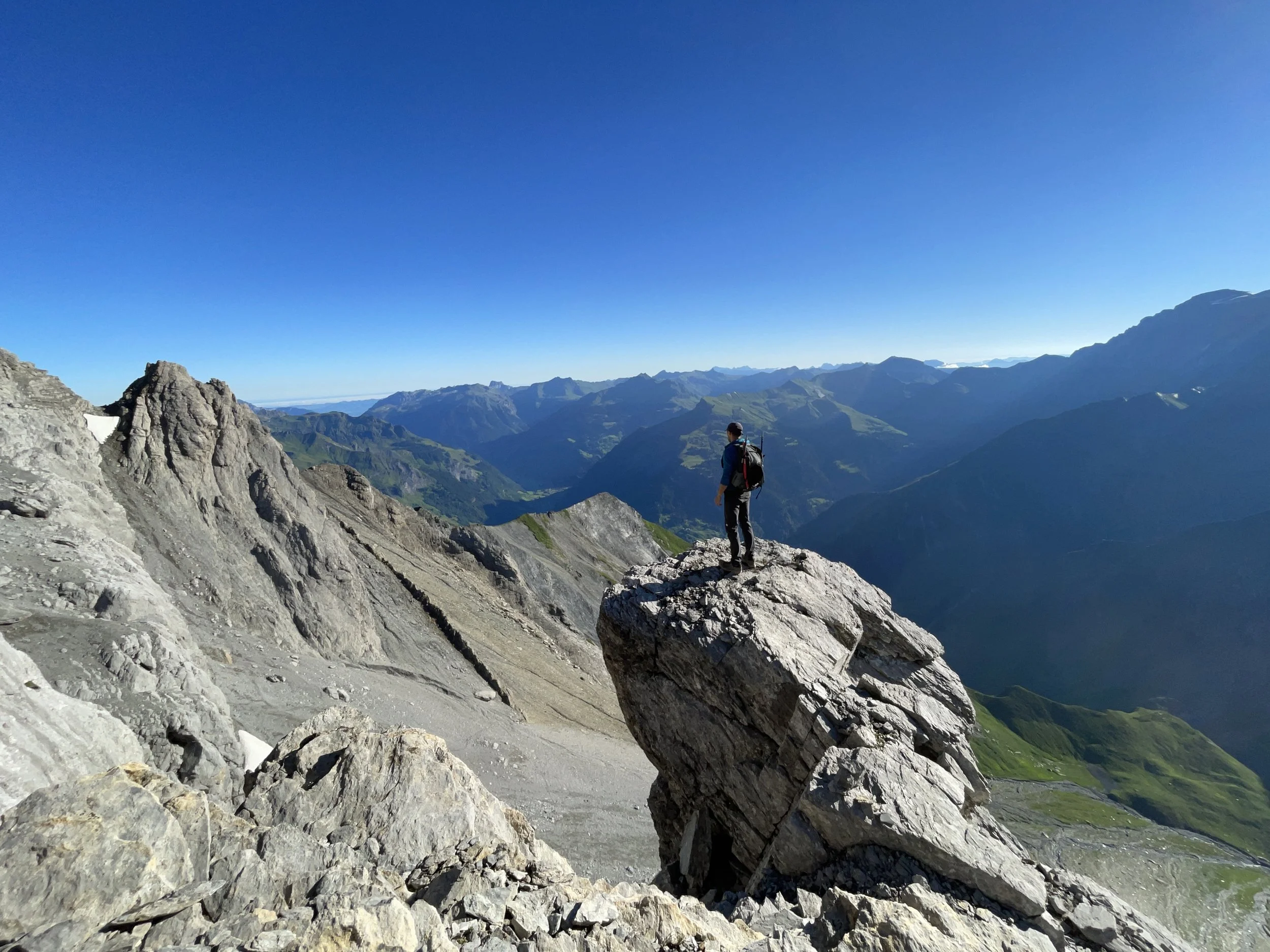

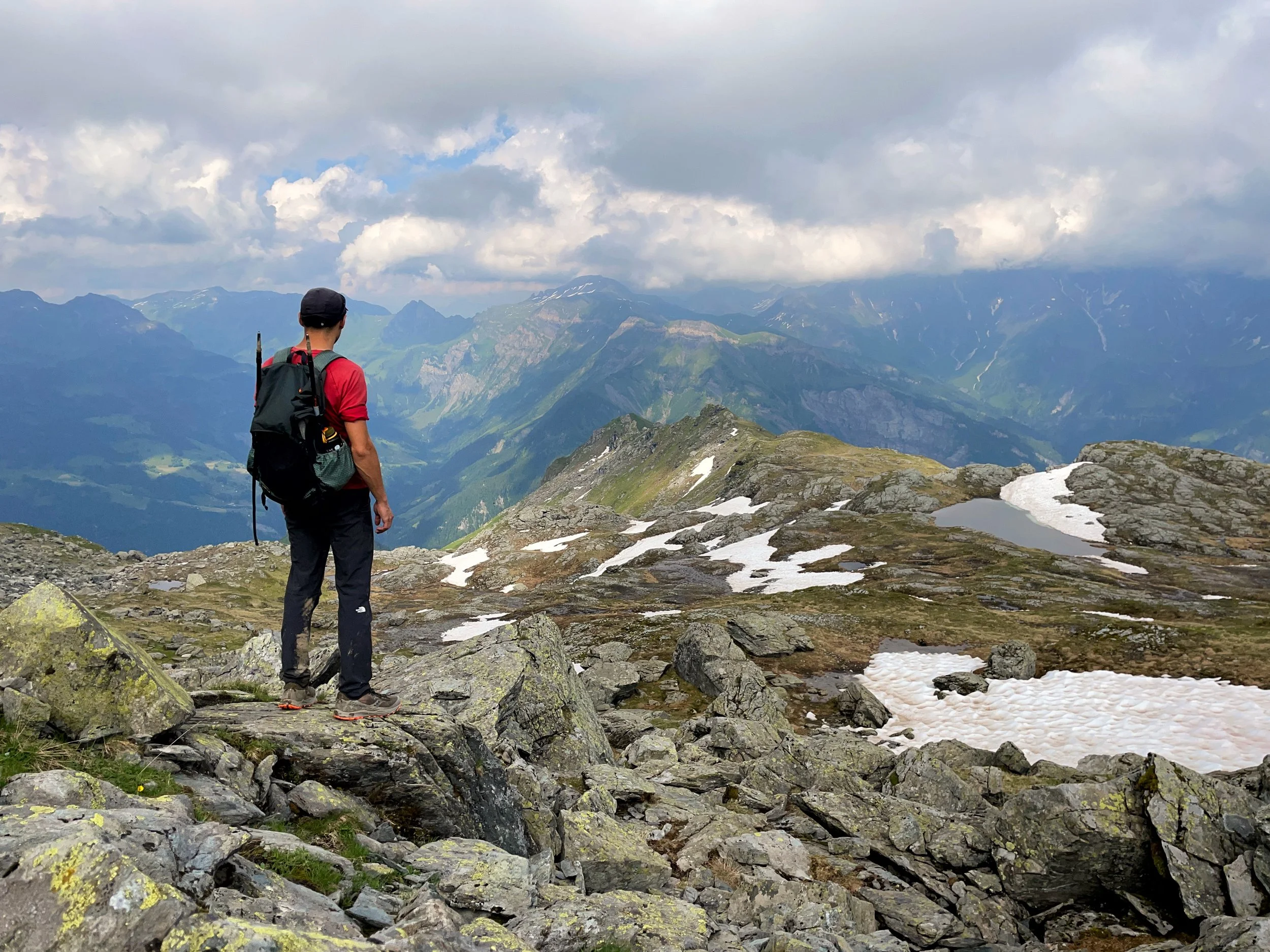
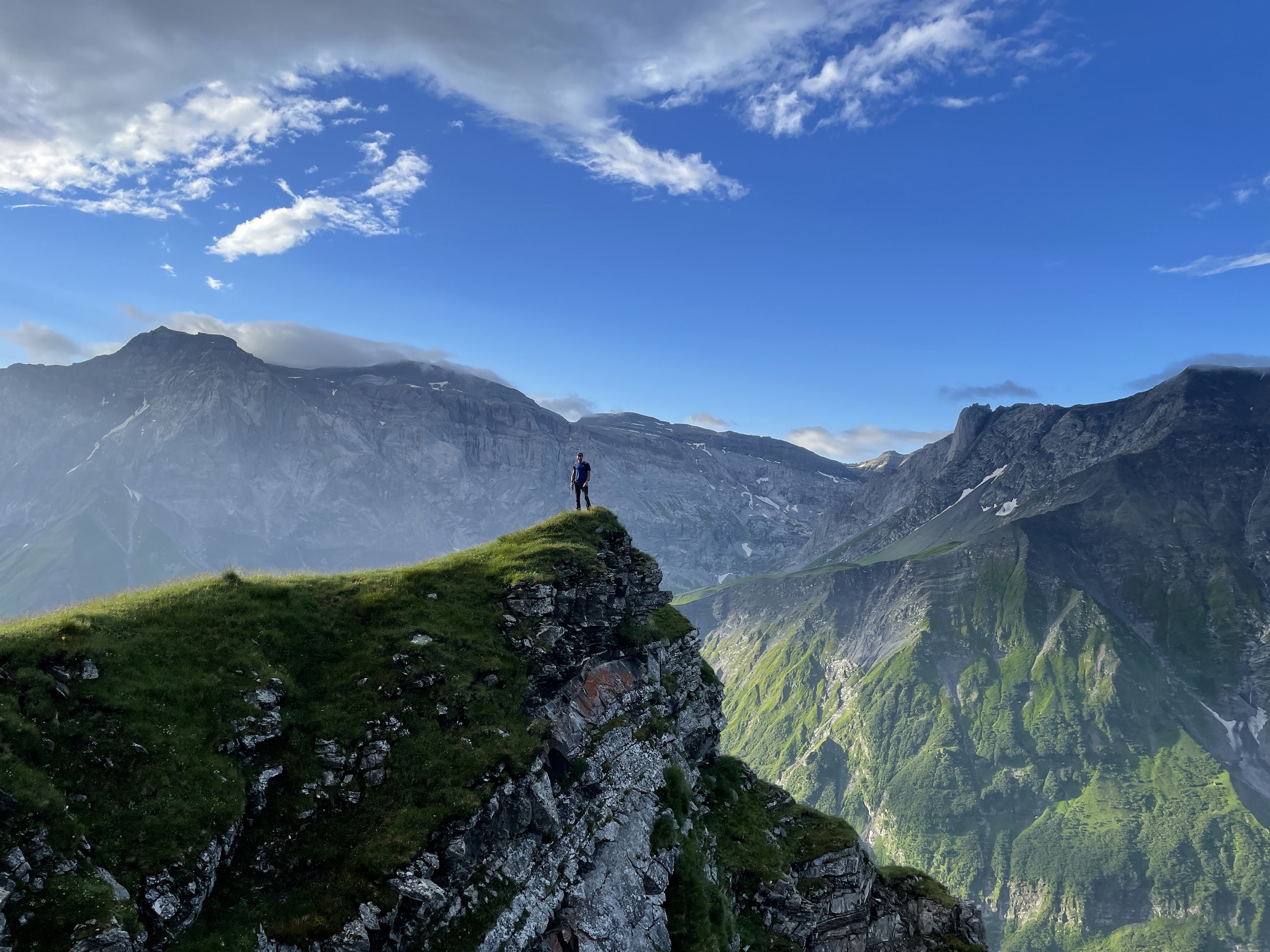
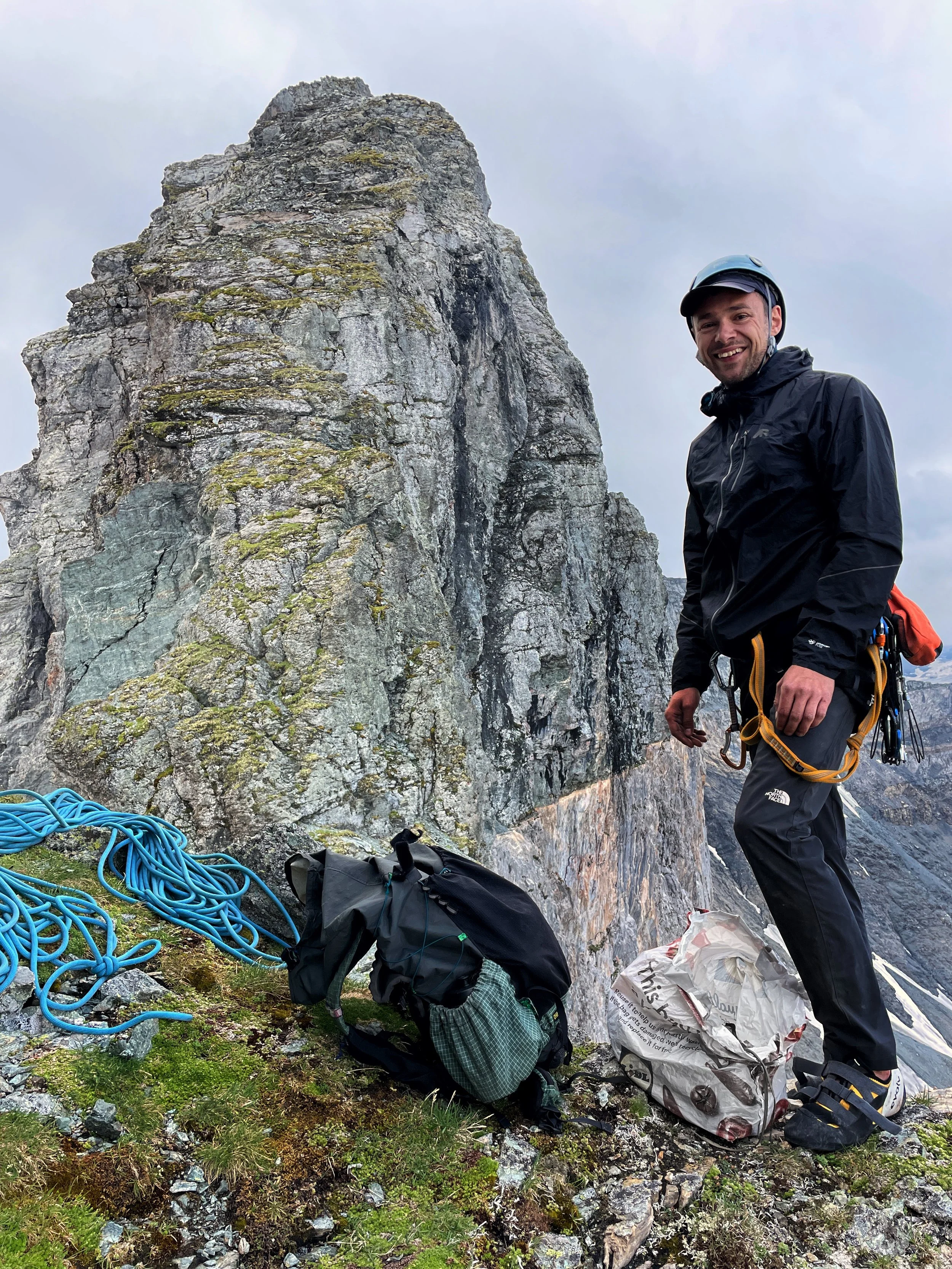

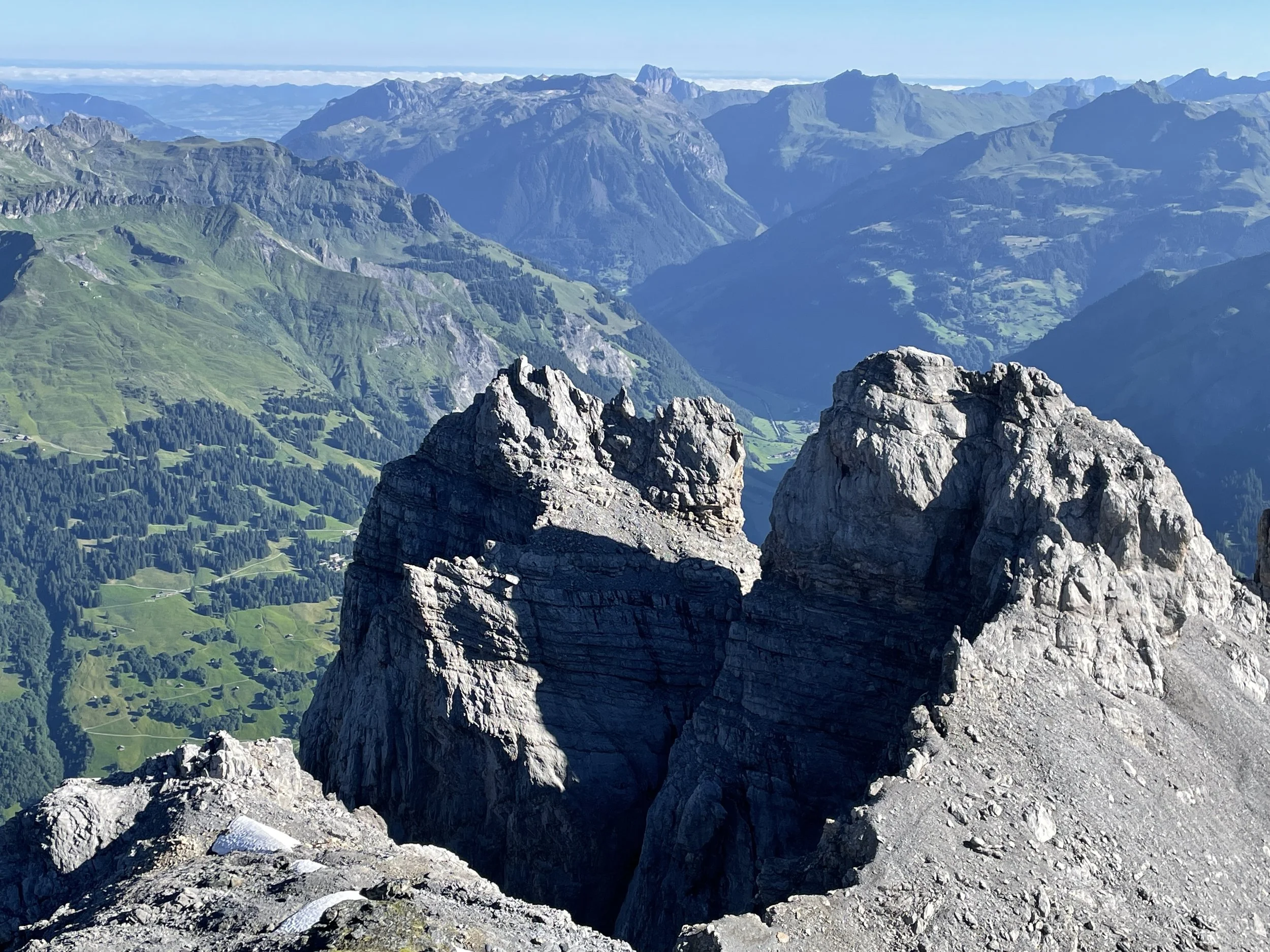


Seeing the same places during a different season gave me a better understanding of how tourists and locals interact with the landscape. The deserted paths that we’d cleared during the spring had become busy with hikers, many of them making the long journey across the Via Alpina long distance route. The snowy slopes of April had become lush meadows, bursting with flowers. Cows grazed higher up, and farms were making cheese. The huts had all opened, and we helped them to restock food supplies for the busy summer months.
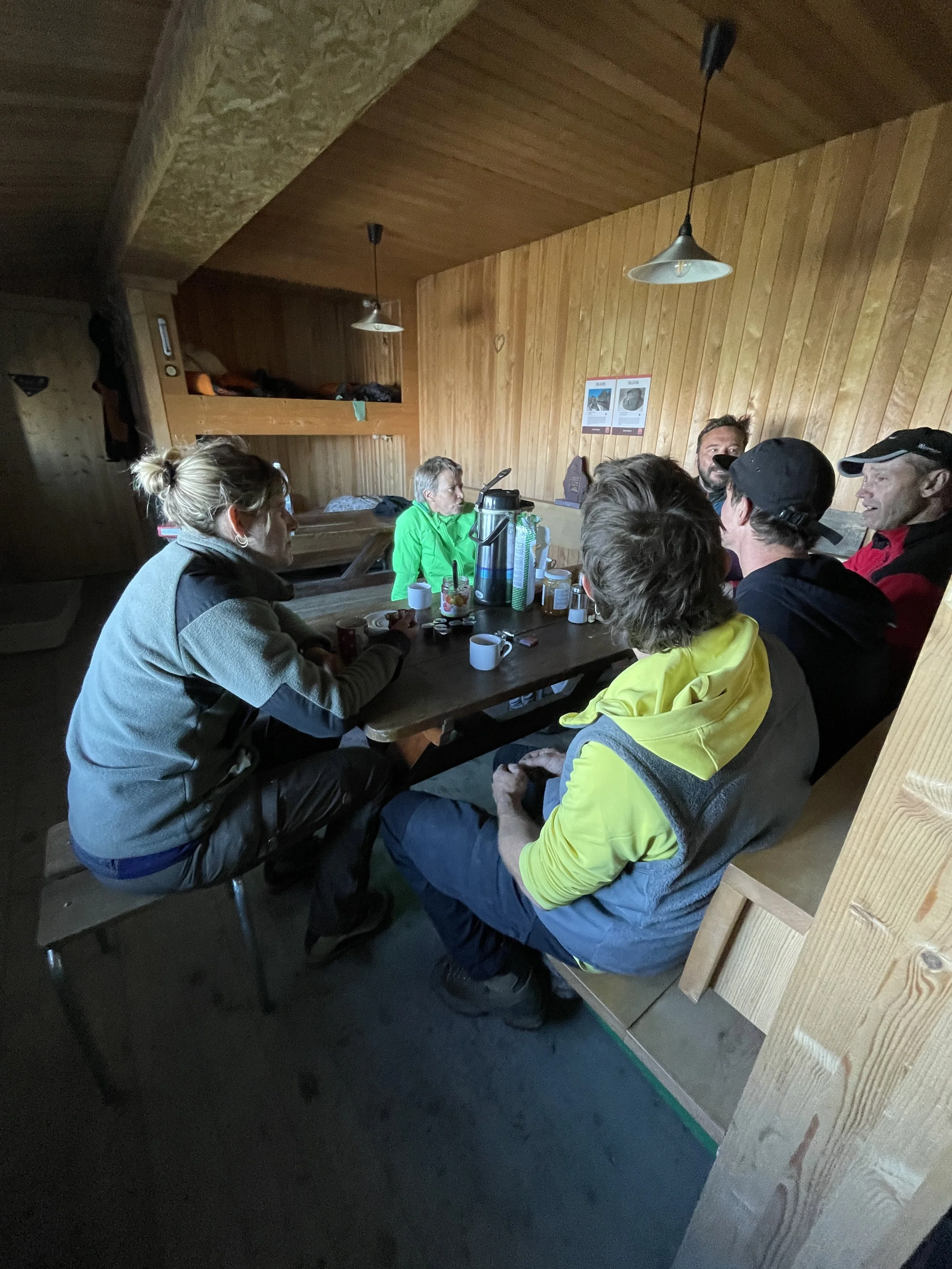
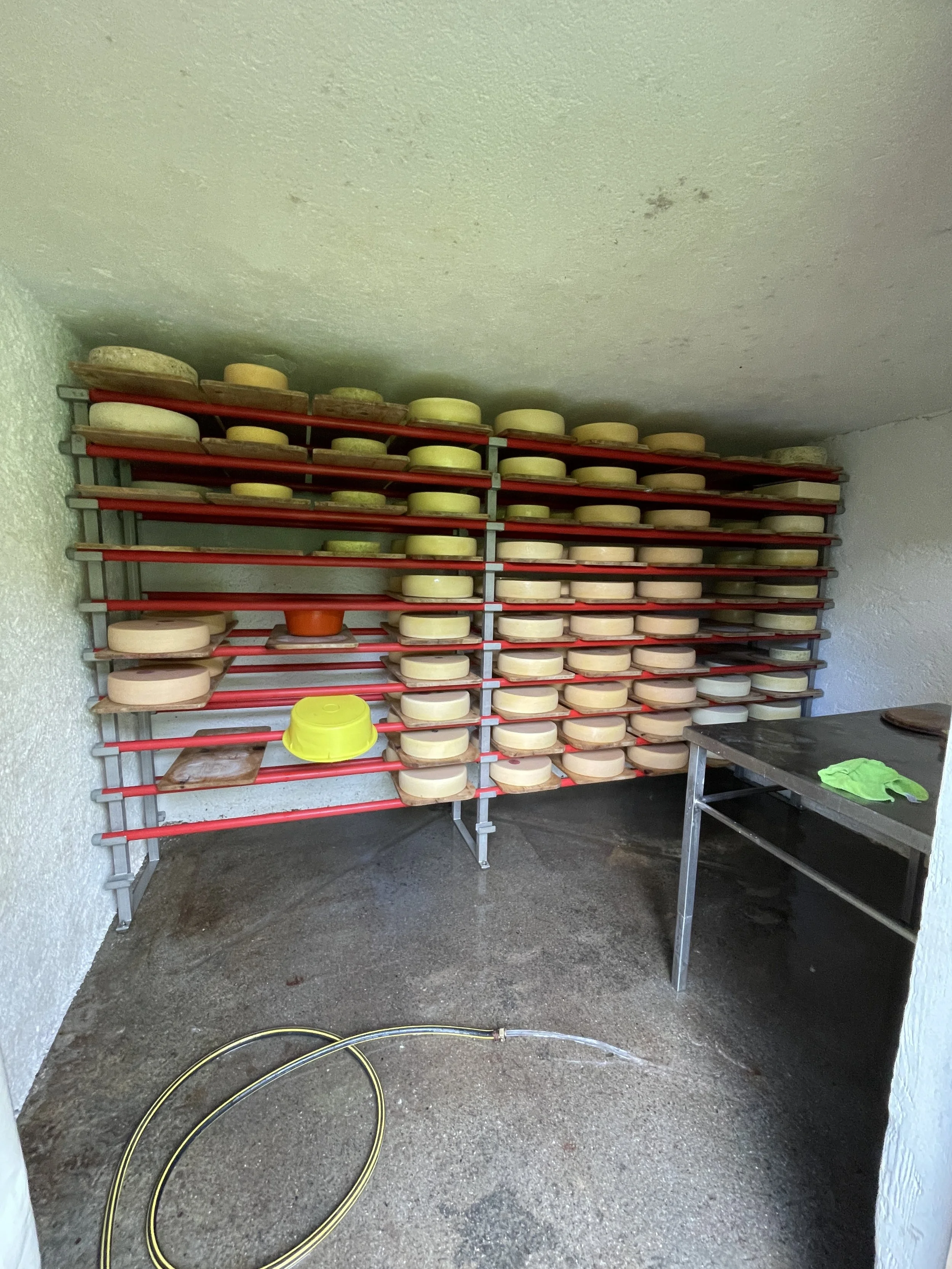
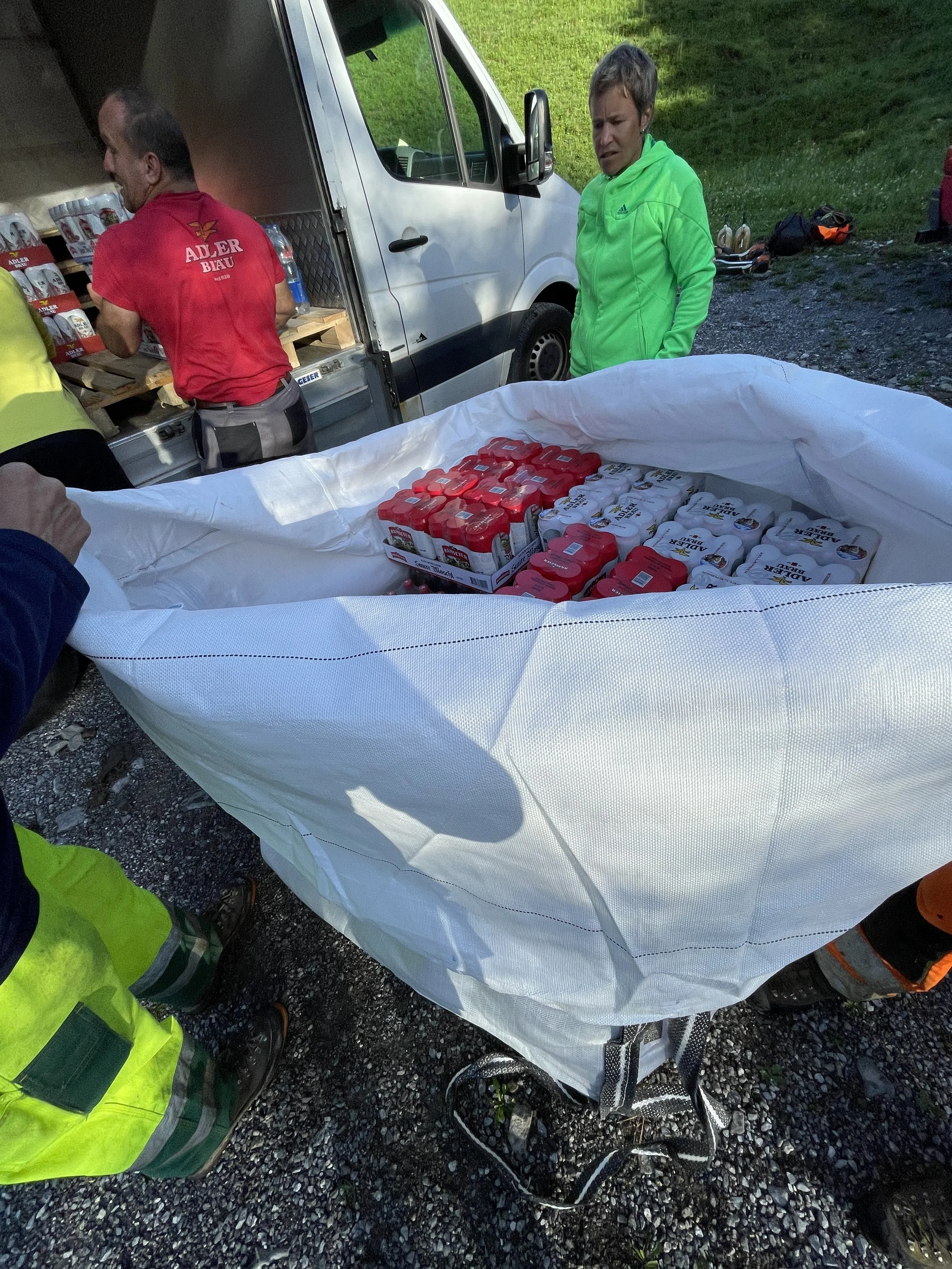

Florian
Throughout my stay, I got spend a lot of time working with Florian. Florian is a carpenter and his wife Nicole is a teacher and ski instructor. They set up the hostel I volunteered at several years ago.
Having moved to Glarus from another region of Switzerland, Florian and Nicole are raising their two young children whilst further developing the hostel. Florian also works with the local trail maintenance organisation, and is a ski patrolman for the village during the winter months.
It was inspiring to see how they have both developed such a close relationship with their local community and the mountains that lay on their doorstep.
The most valuable thing that I took from my stay there was this insight into how Florian and Nicole have made the mountains such a huge part of their day-to-day life, and how this brings so much happiness to their family. They aren’t just taking from the mountains and their community, they are giving something back as well.

